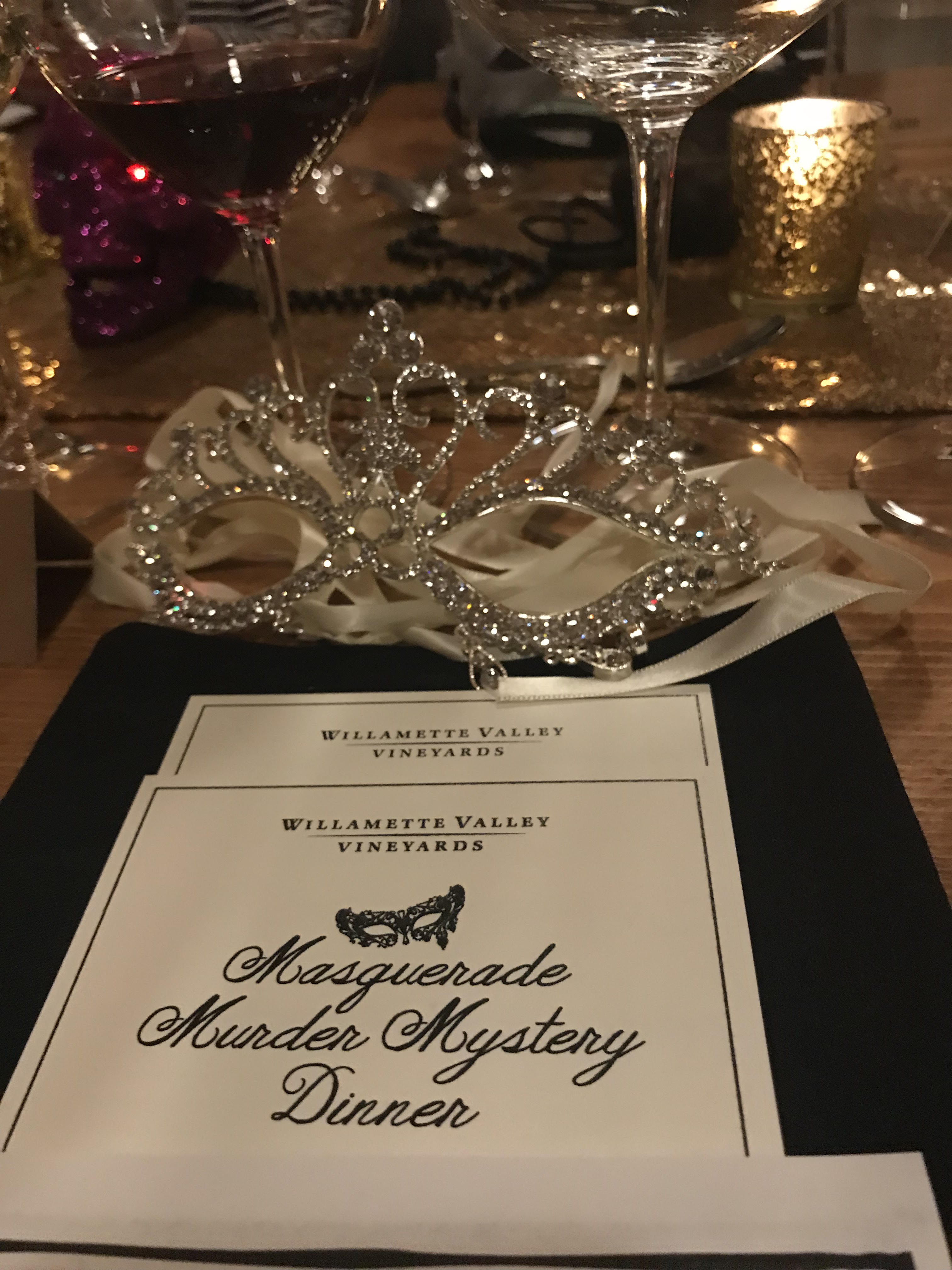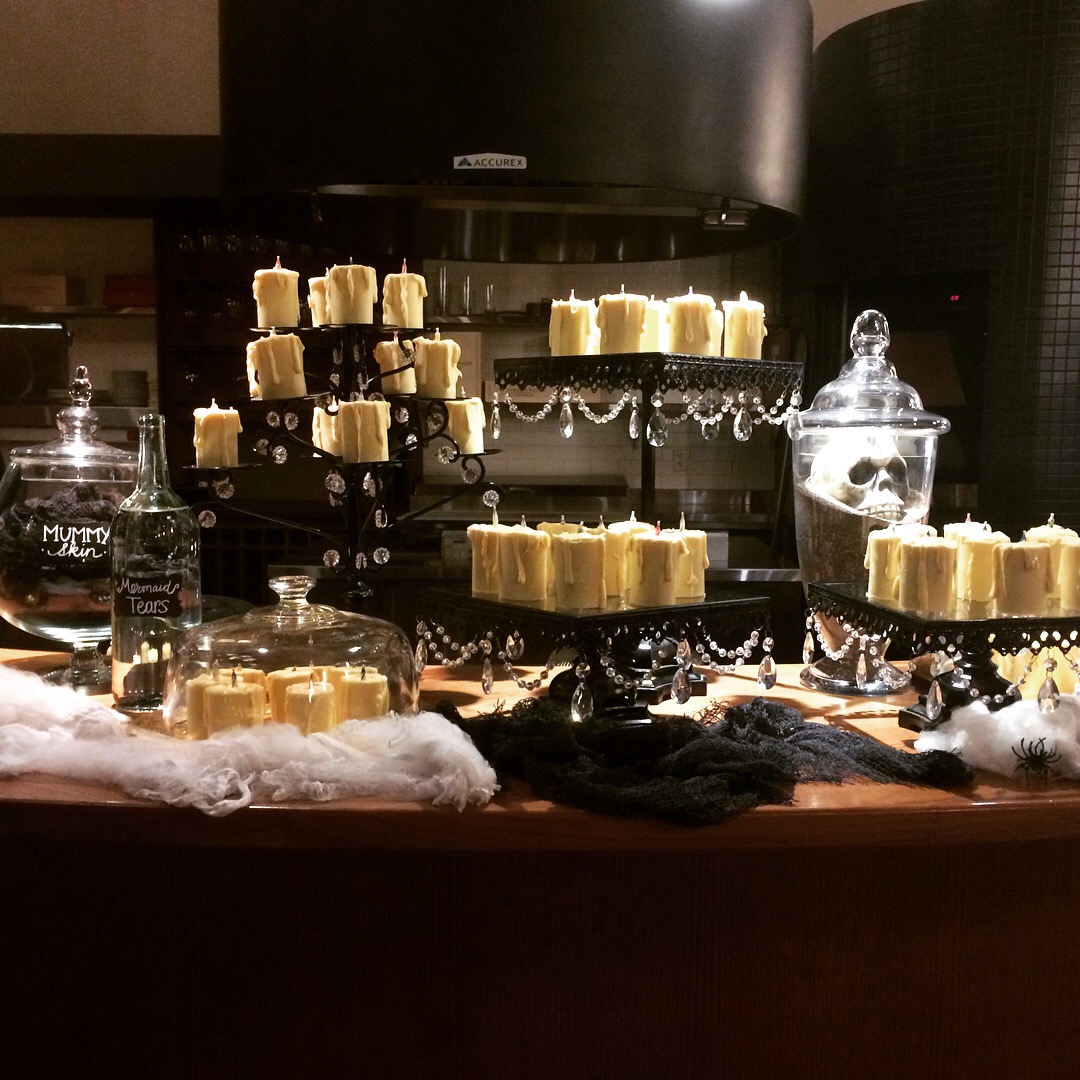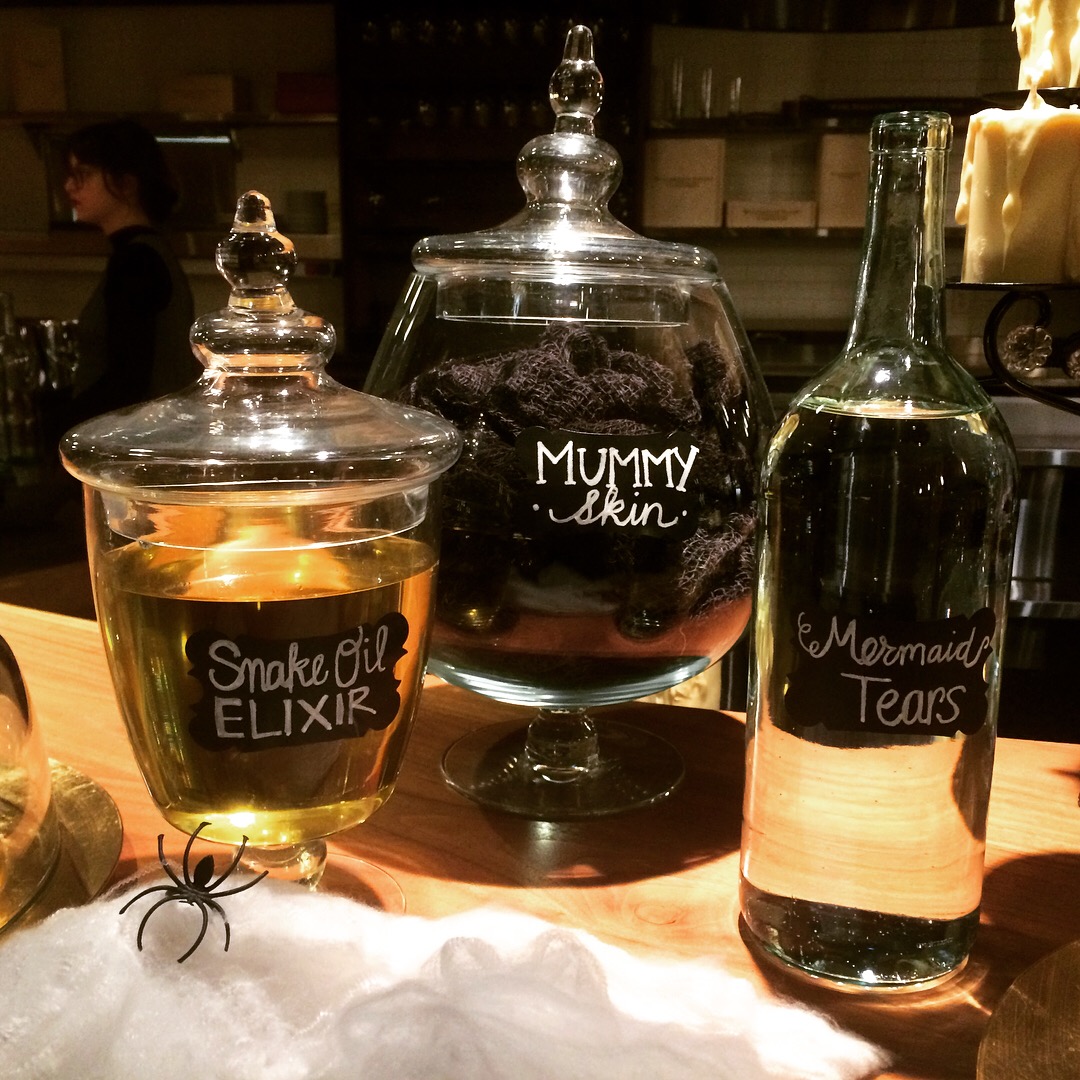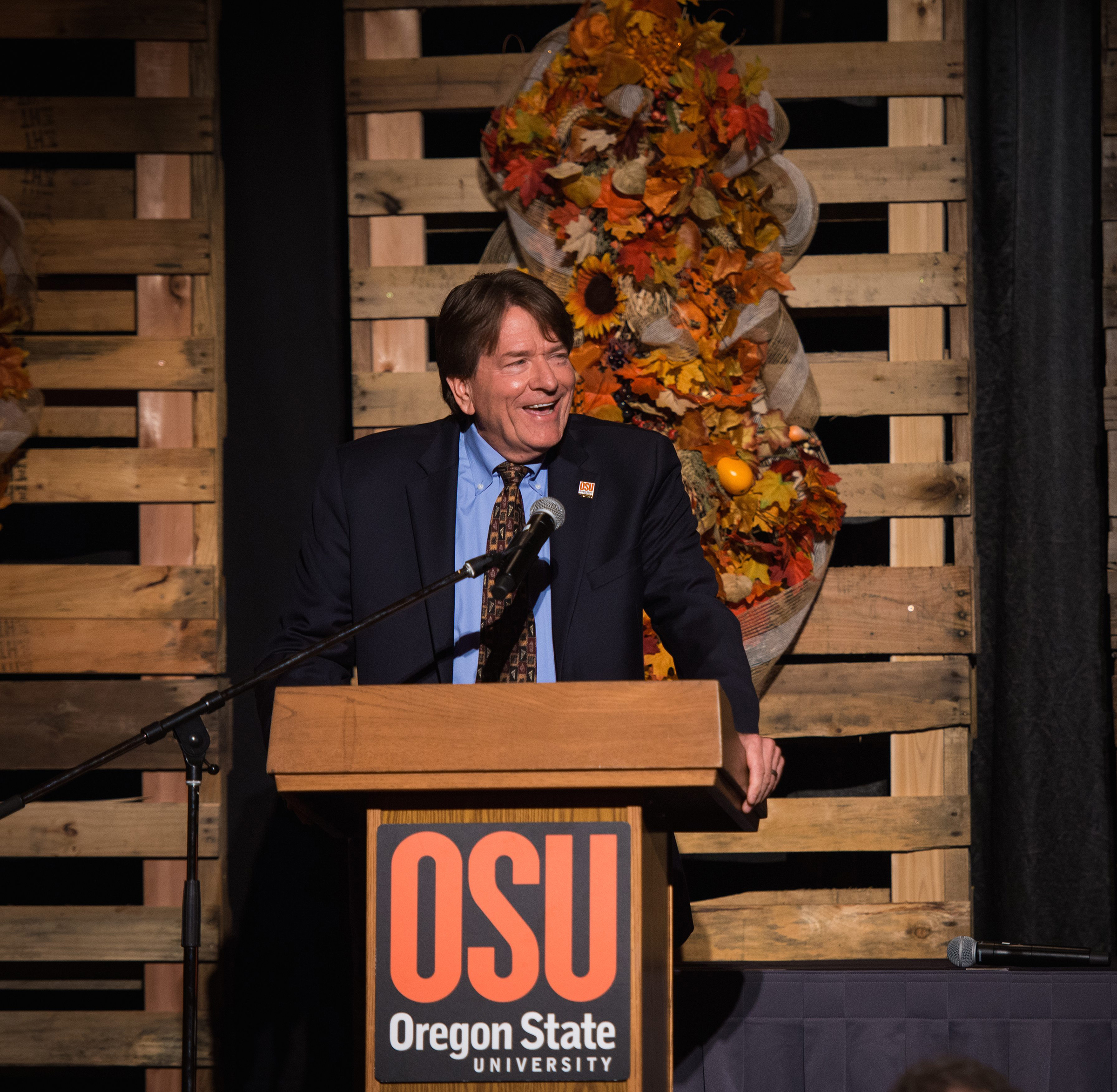New Daily Pairings Menu
We are excited to present our new Daily Pairings Menu filled with fresh, local seasonal ingredients that pair perfectly with our latest wine releases. Our Estate Tasting Room is open daily from 11 am - 6 pm. Please join us soon!
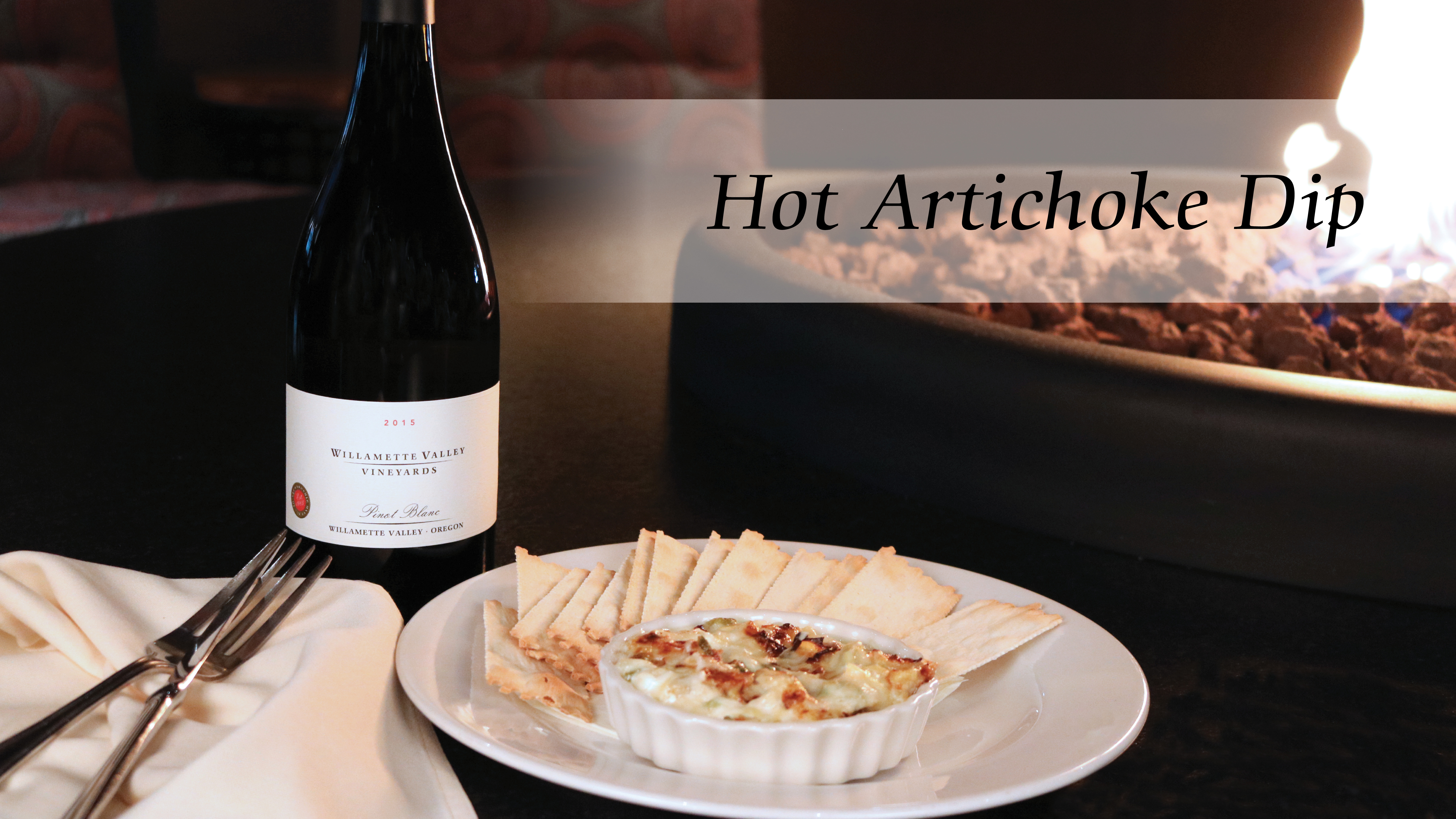
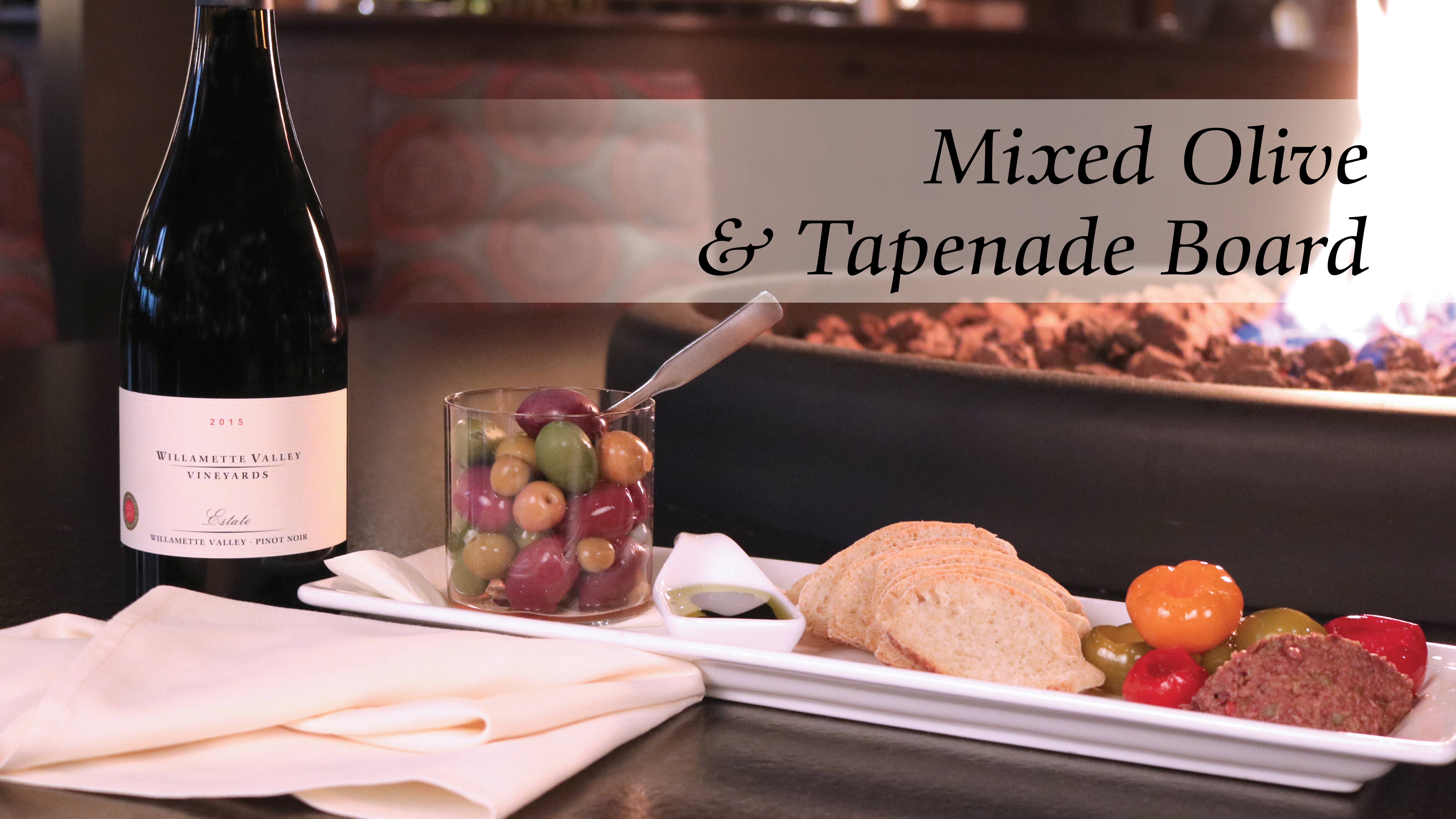
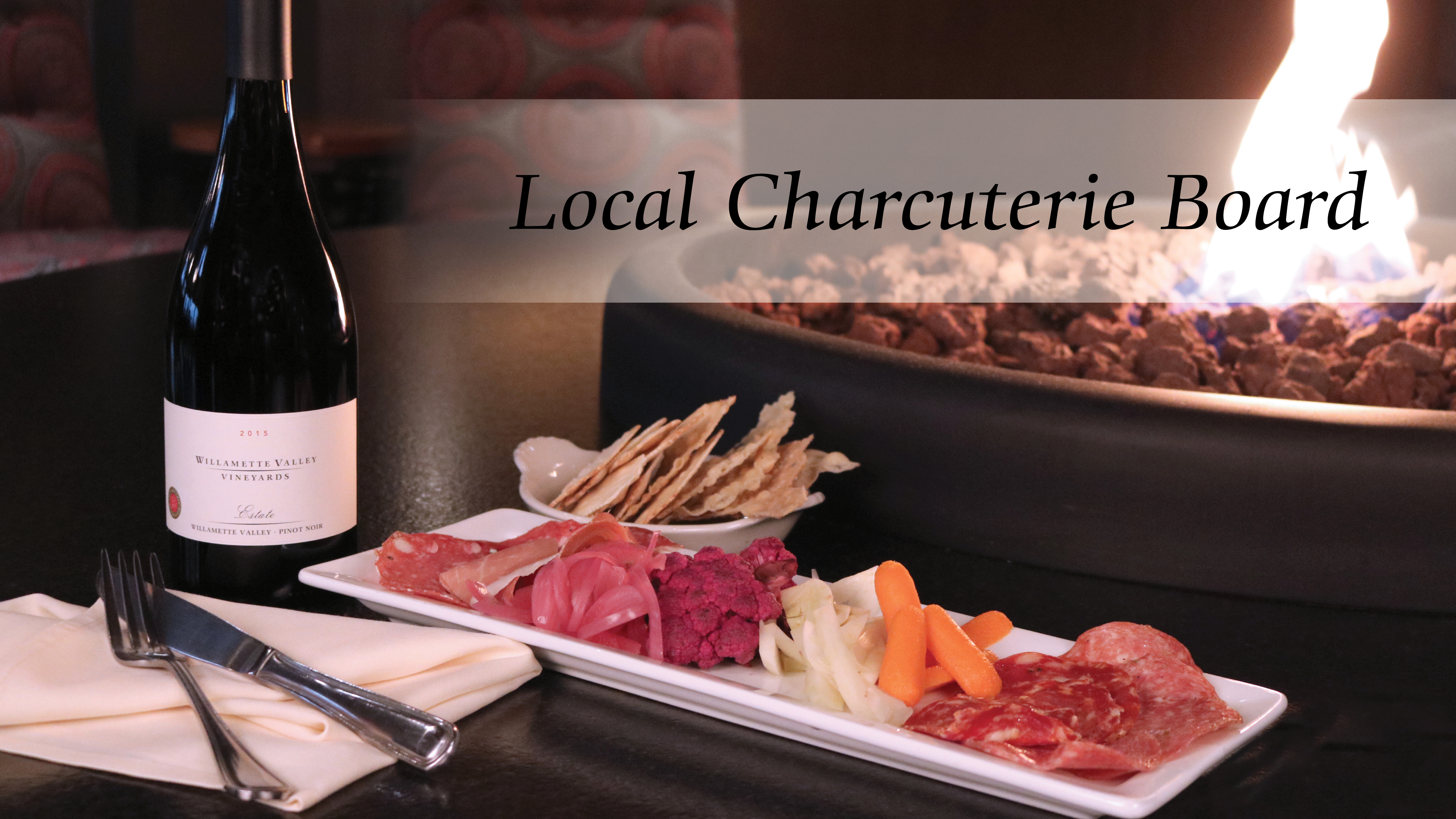
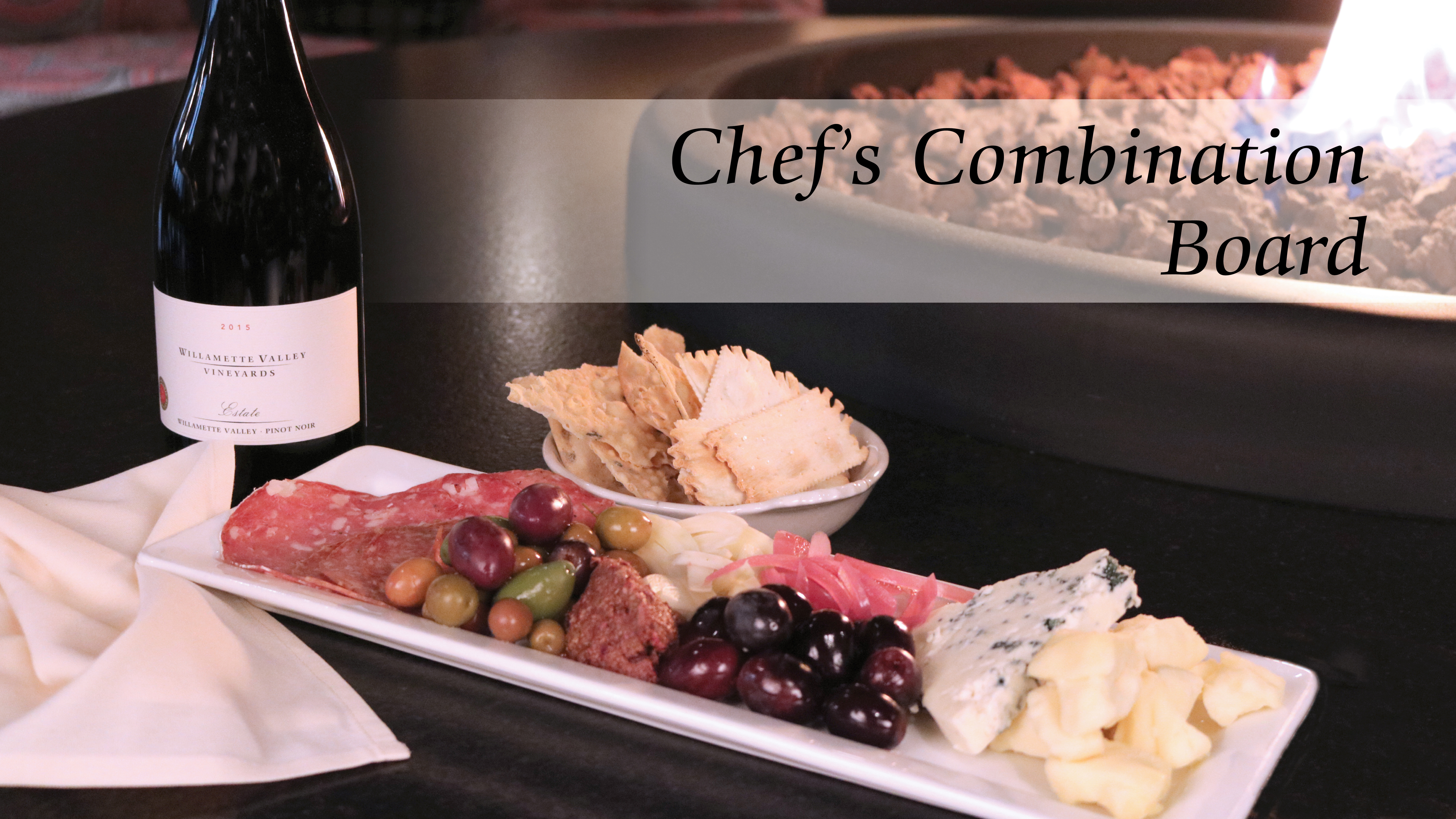
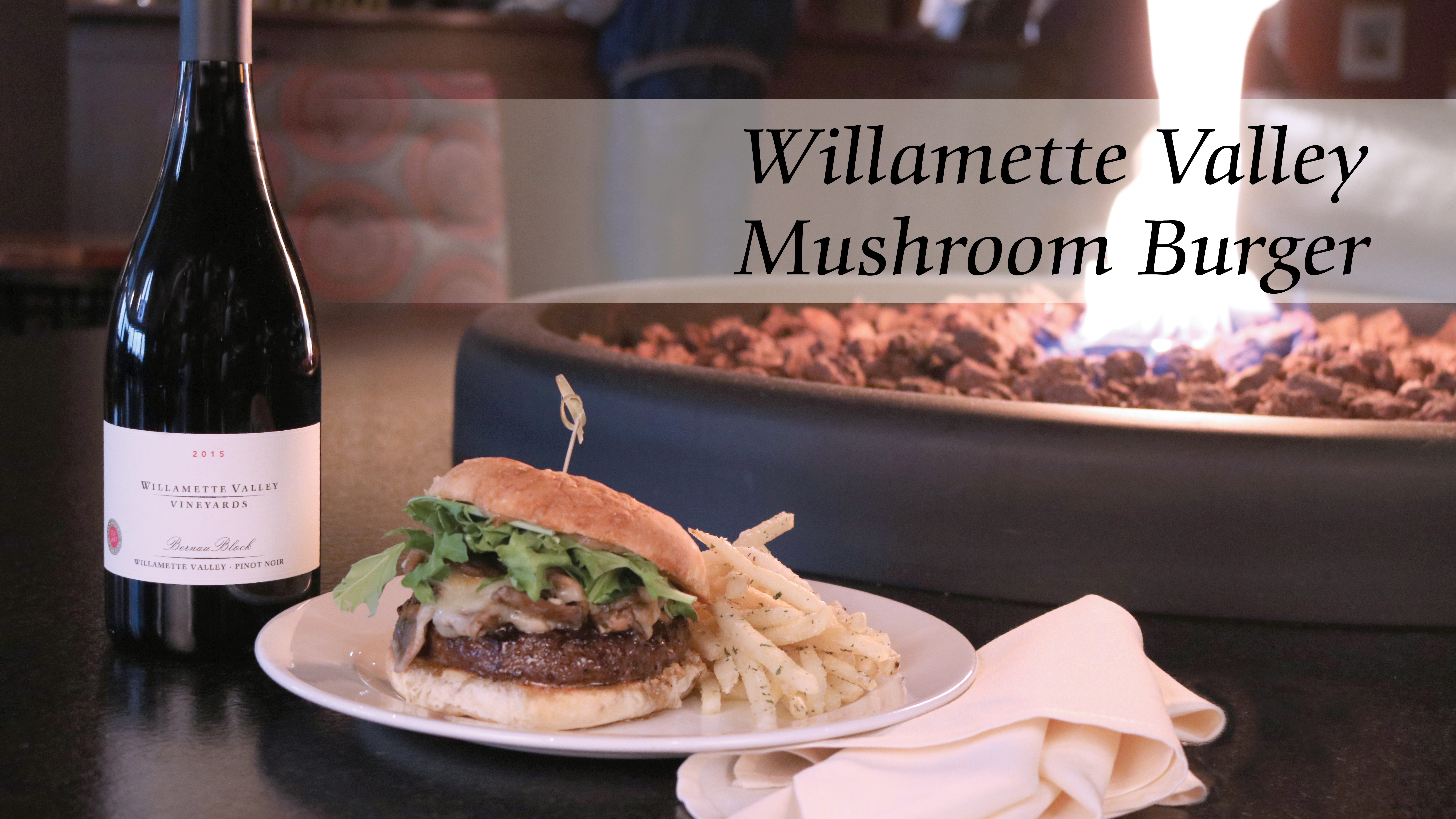
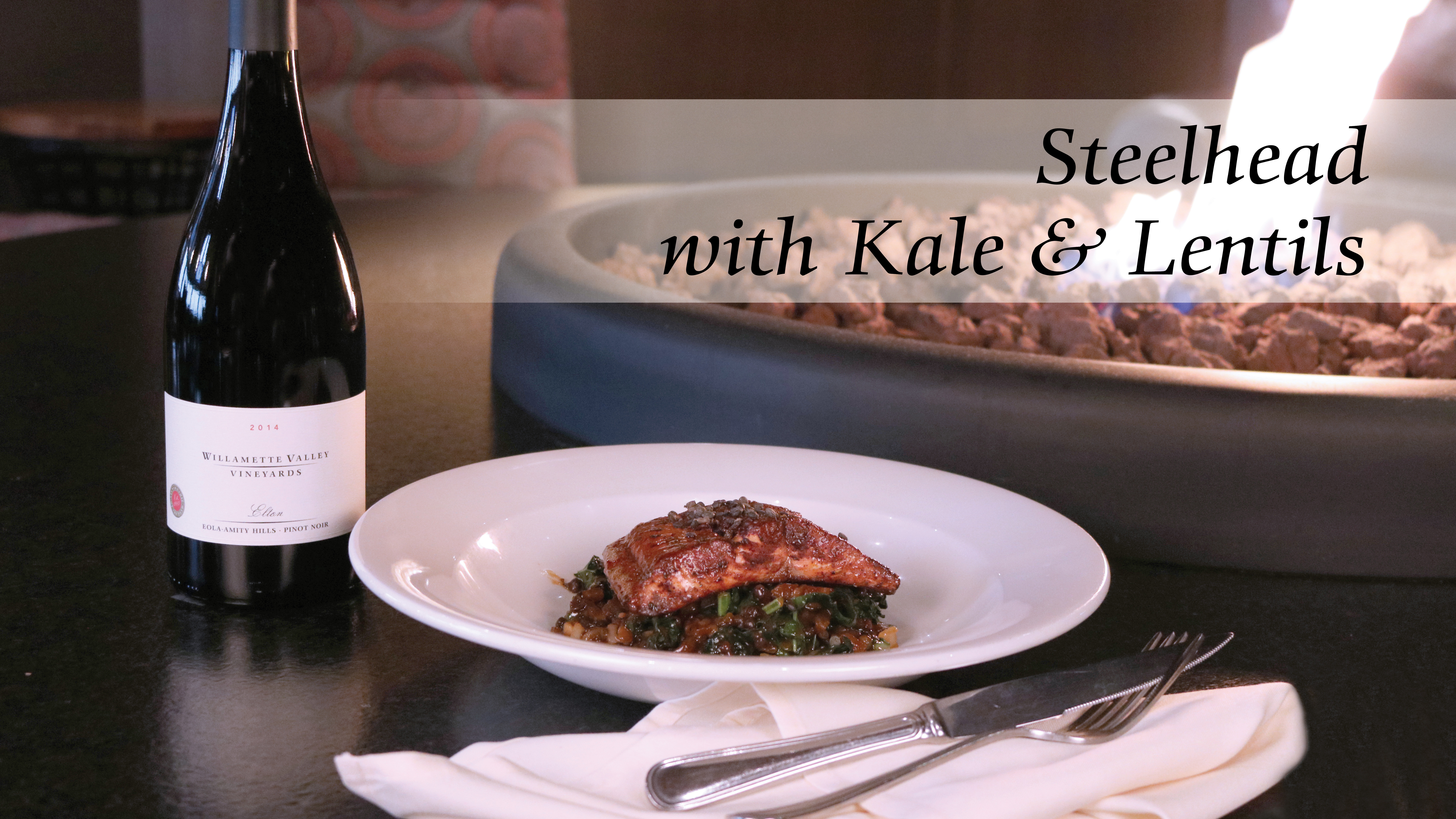
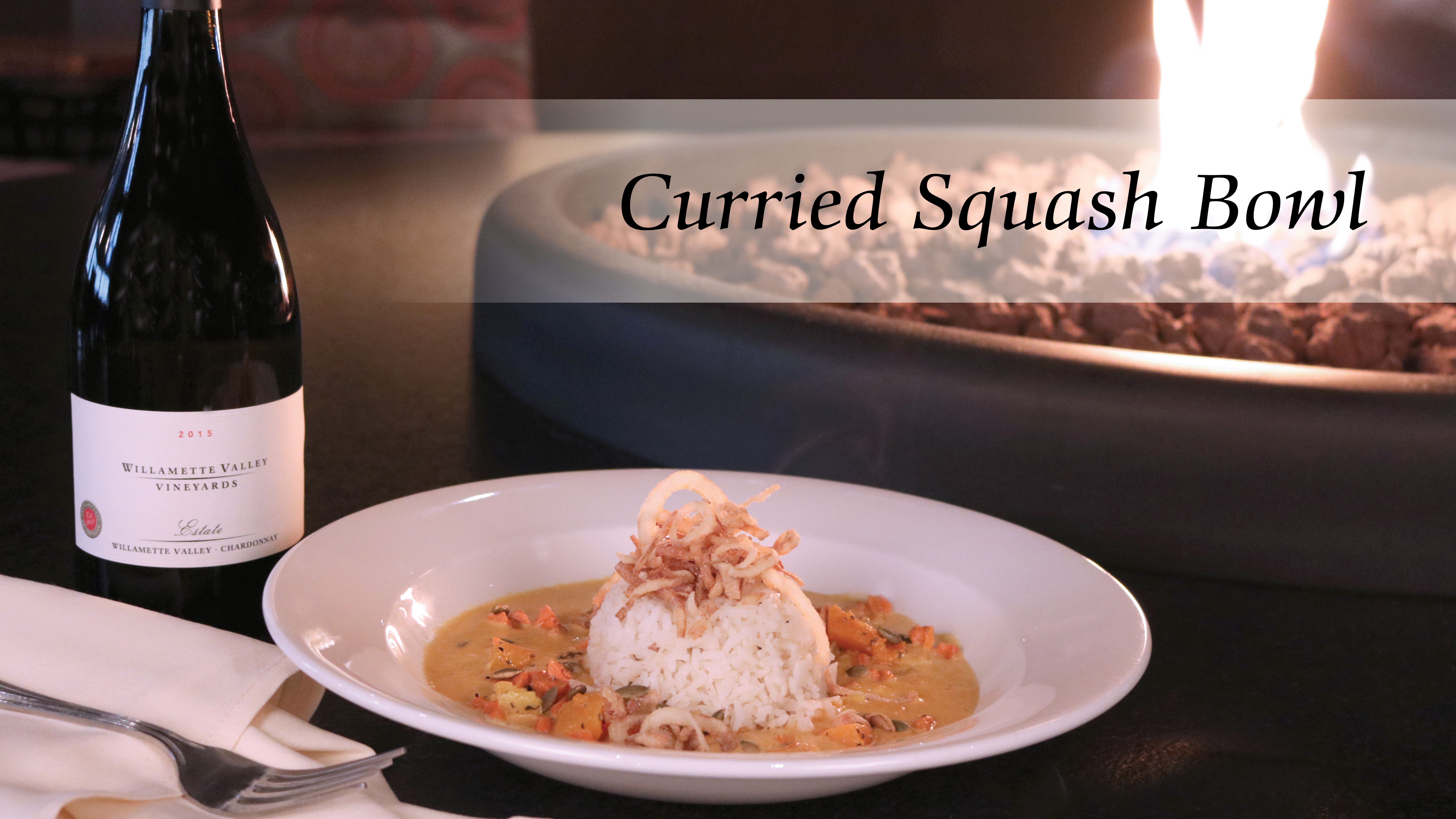

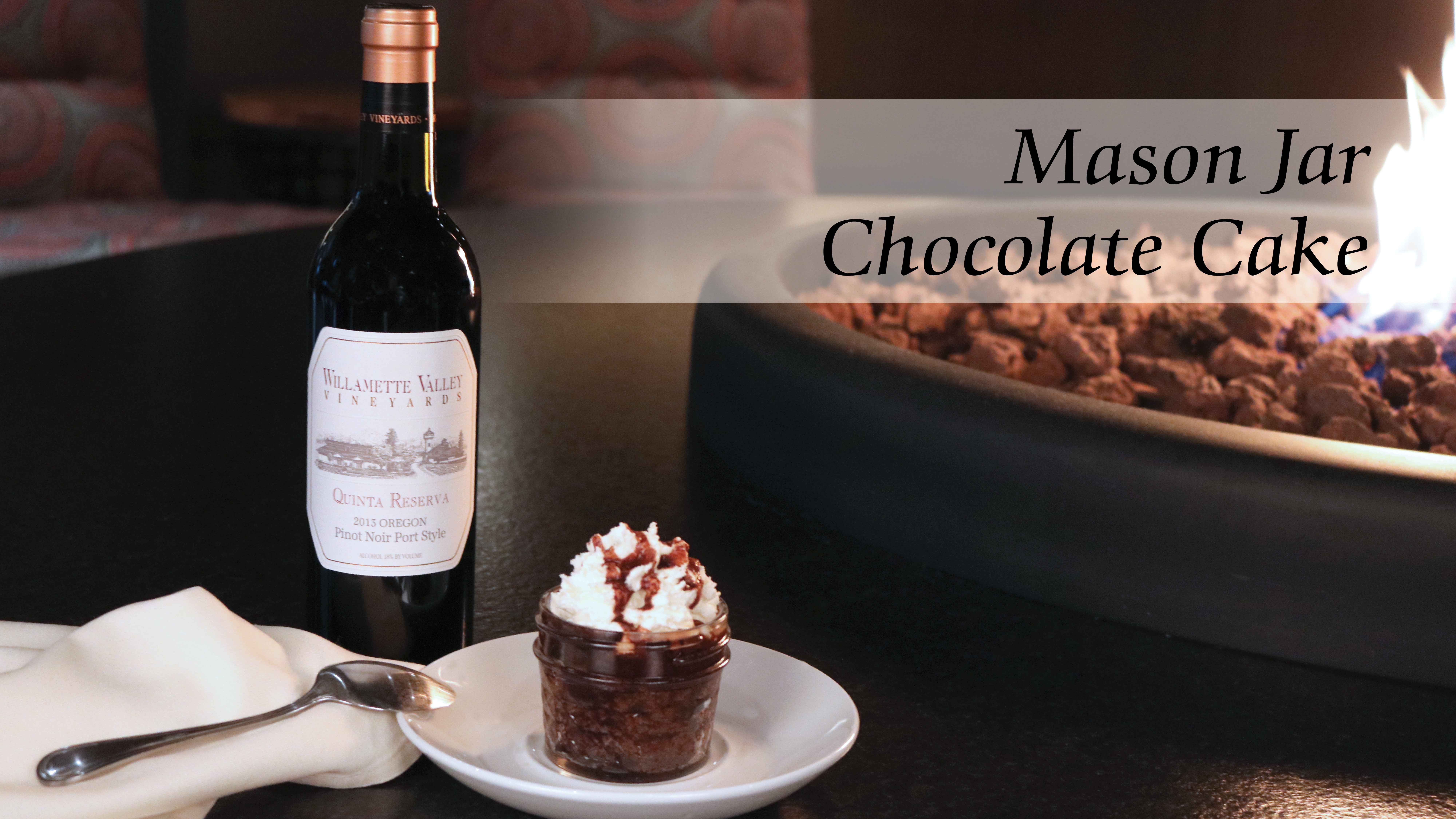
Halloween at the Estate
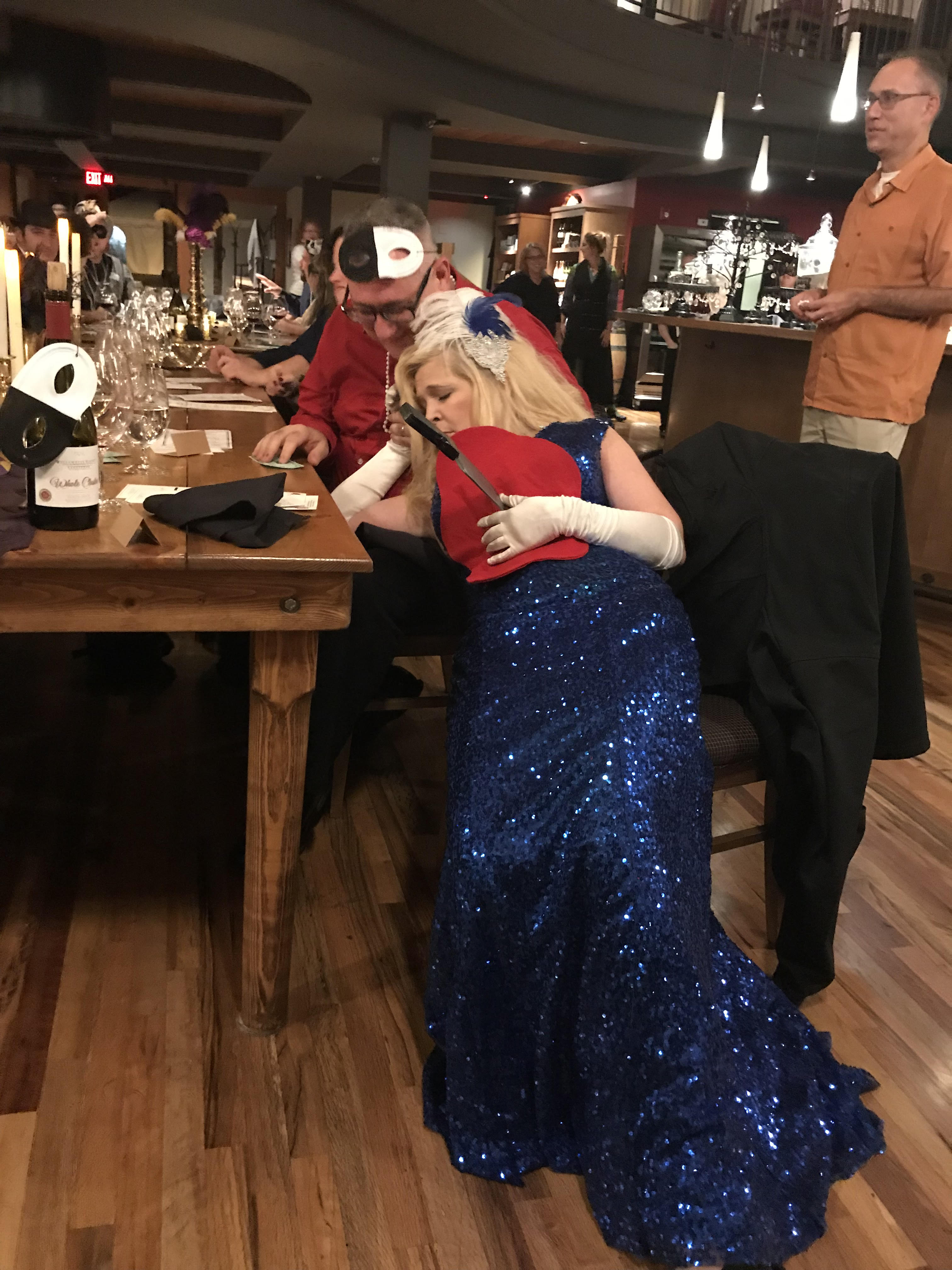
Celebrating Halloween is always a scary good time at our Estate, south of Salem. This weekend we enjoyed hosting many of our Wine Club Members and Owners during our annual Murder Mystery Dinner! This year, our members dared to join us at the Mayor's mansion and enjoyed a custom New Orleans inspired menu created by Winery Chef, DJ MacIntyre paired with our latest wine releases. Little did they know, there would be more than wine pouring during their dinner...but maybe even a little blood.
Today, many team members are enjoying the fun of the holiday and dressing up for our guests who join us for a tasting. Introducing our new Tasting Room Associates: Rosie, John Wayne, Elvira, and Ms. Marilyn Monroe. We look forward to seeing all of our ghoulish guests dressed up and enjoying some of our classic Oregon wines!
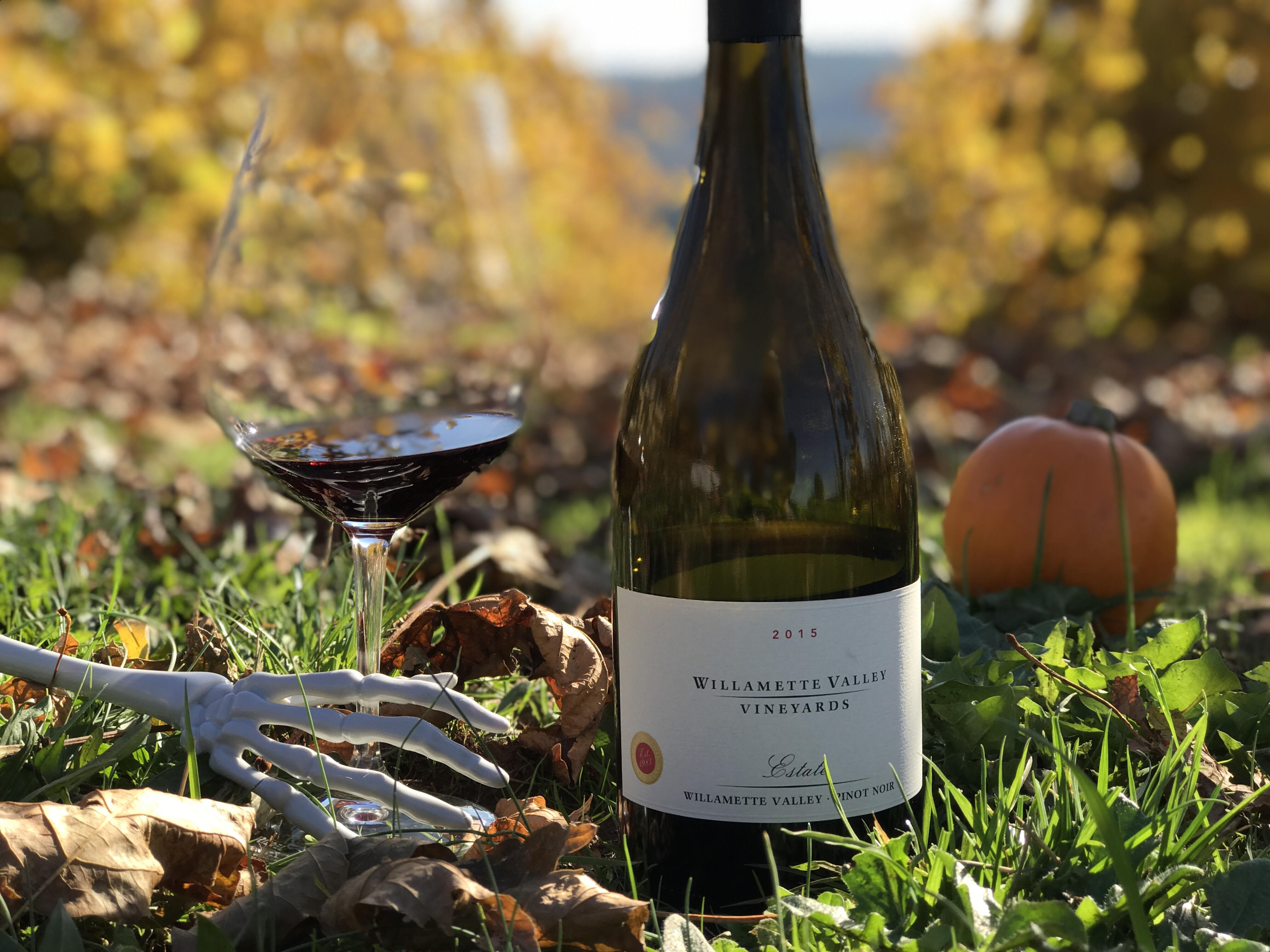
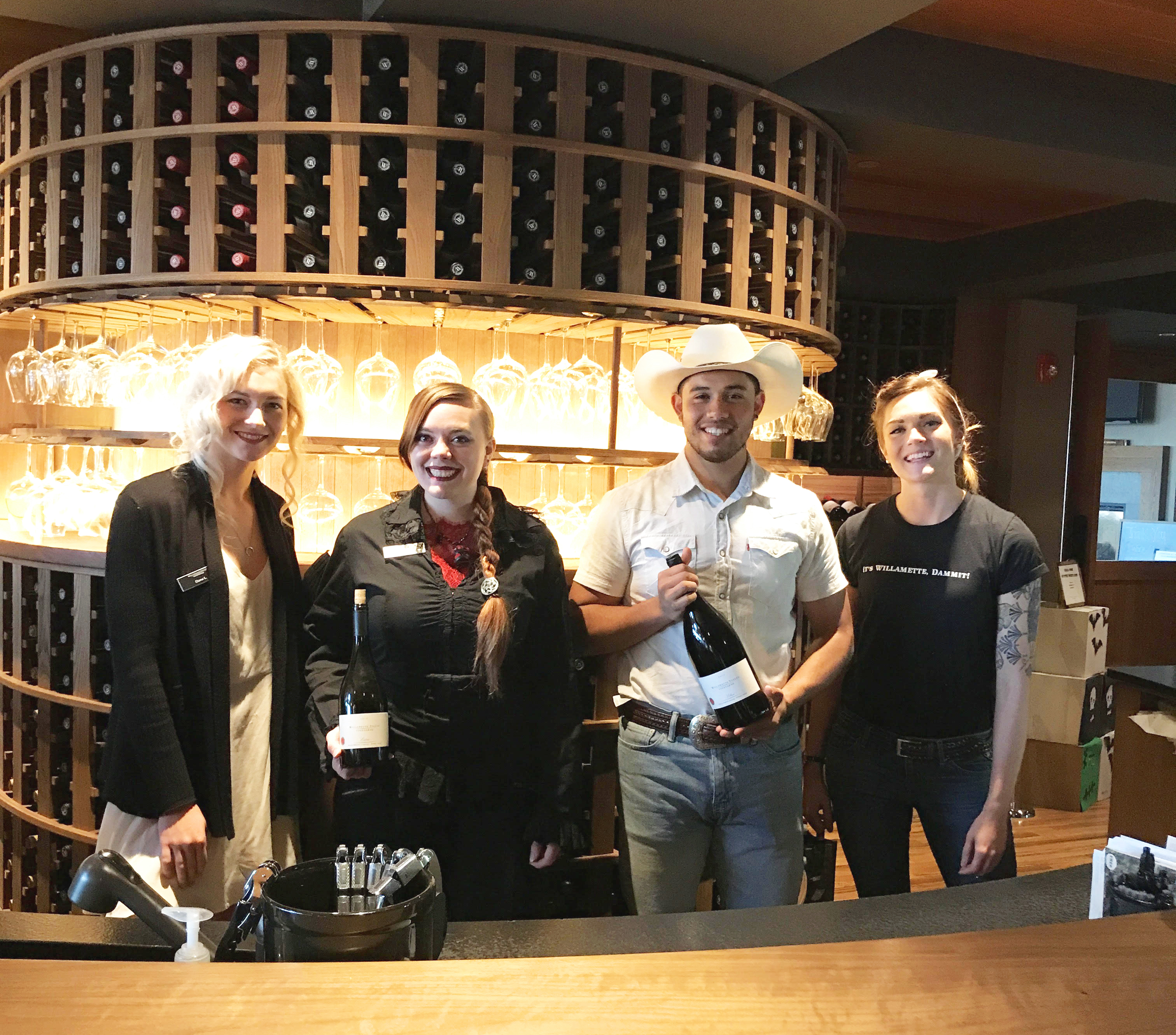
Totality Among the Vines
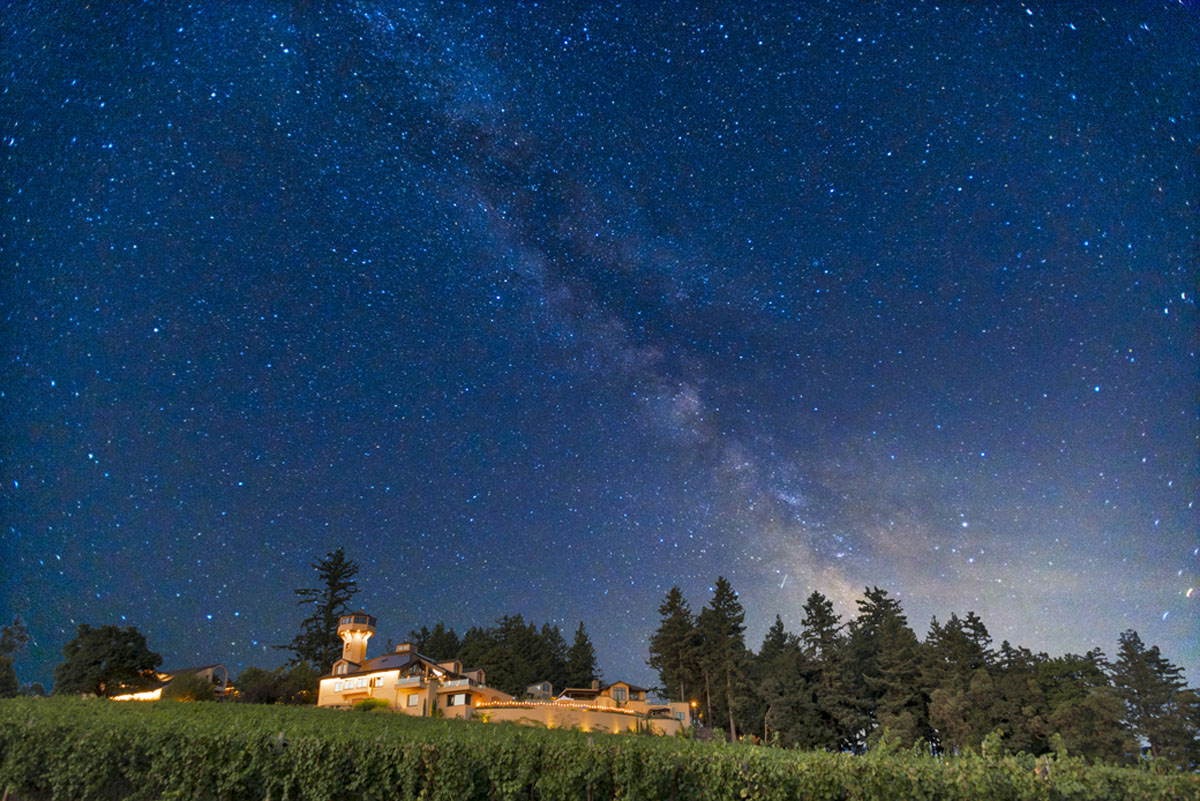
View of Winery on the eve of the Solar Eclipse
Photo Credit: Janis Miglavs
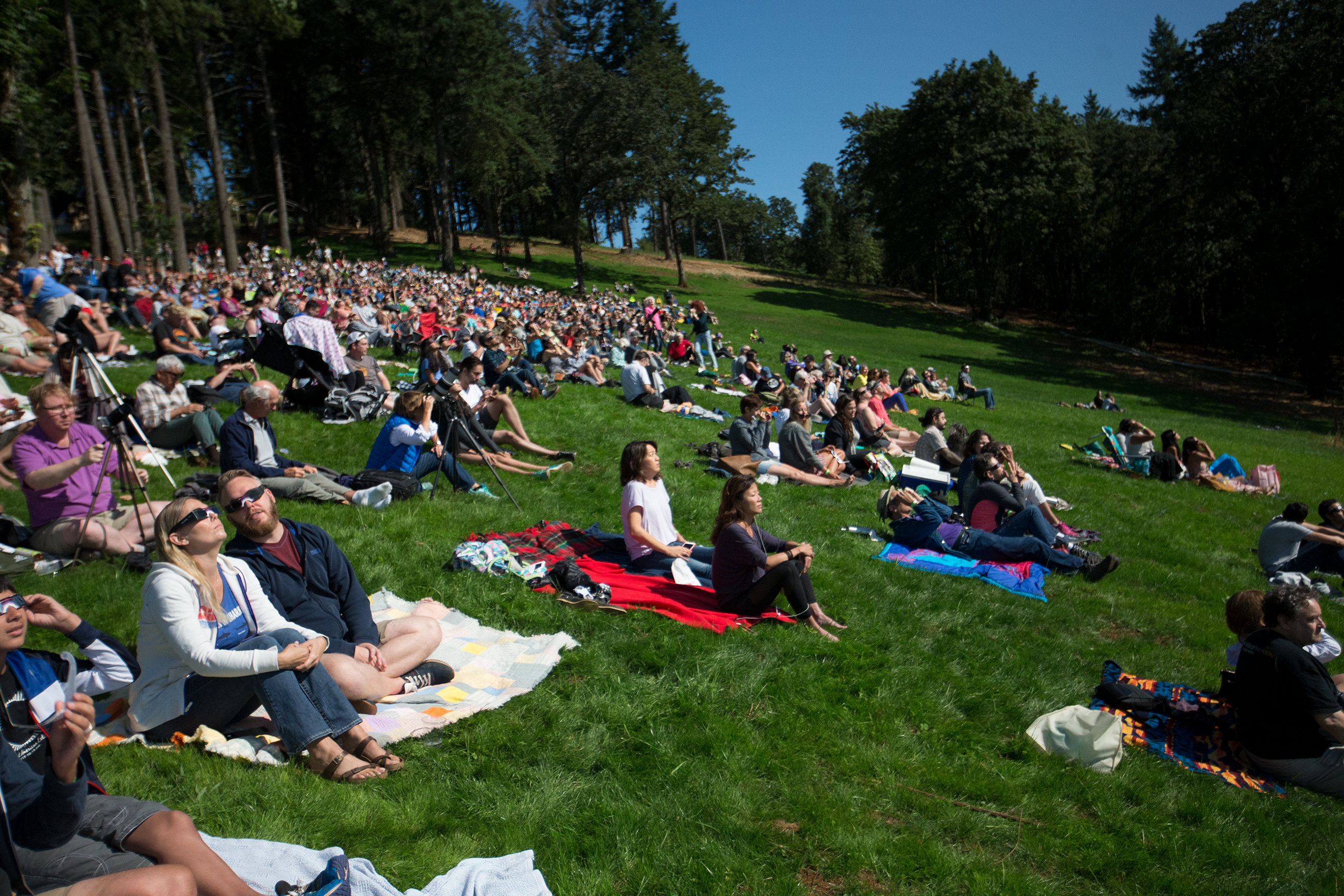
Guests view the start of the Solar Eclipse. Photo credit: Scott Cassidy

Founder, Jim Bernau with daughter Emi at the admissions booth. Photo credit: Scott Cassidy
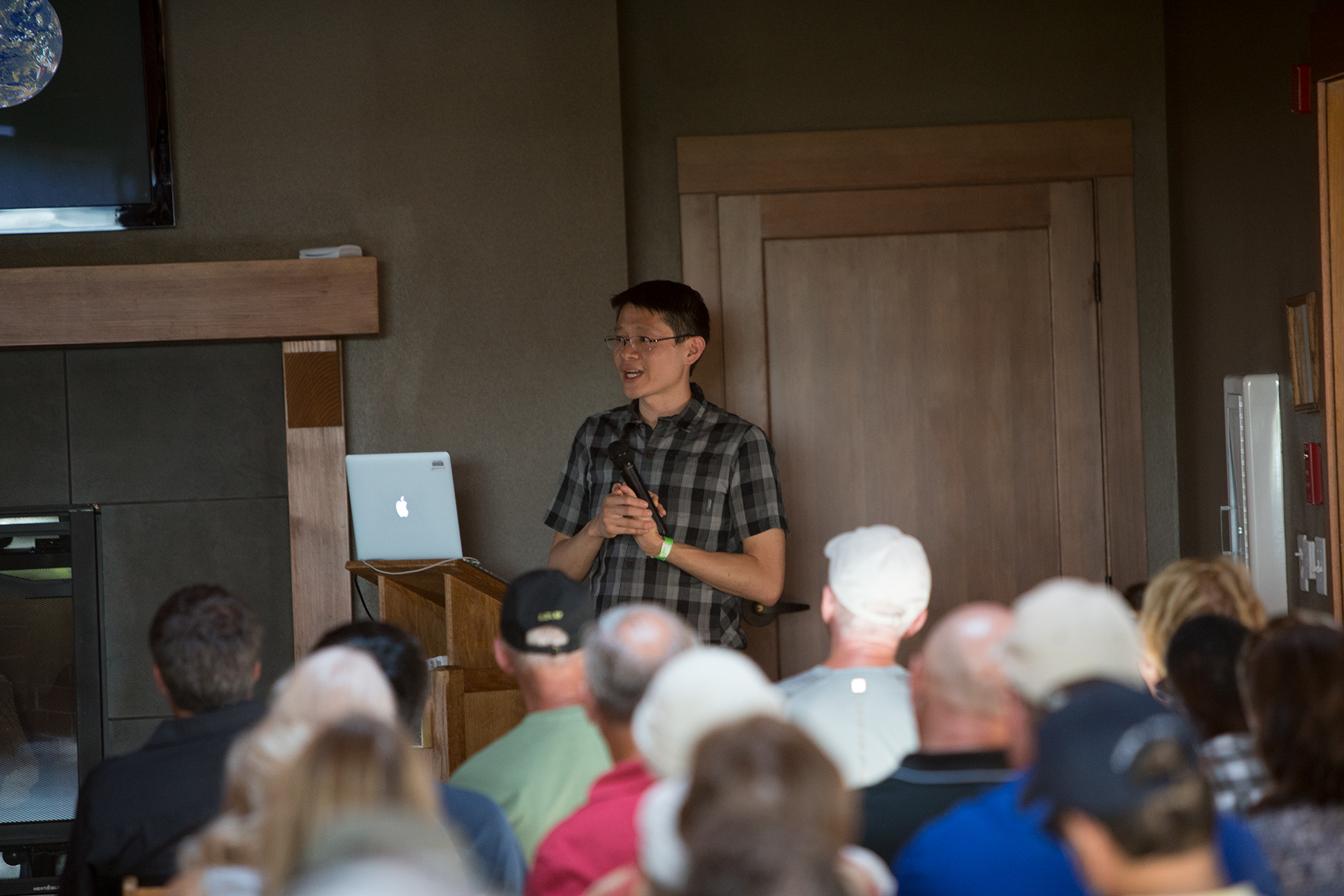
Dr. Mark Cheung gives presentation, "The Sun in a New Light." Photo credit: Scott Cassidy
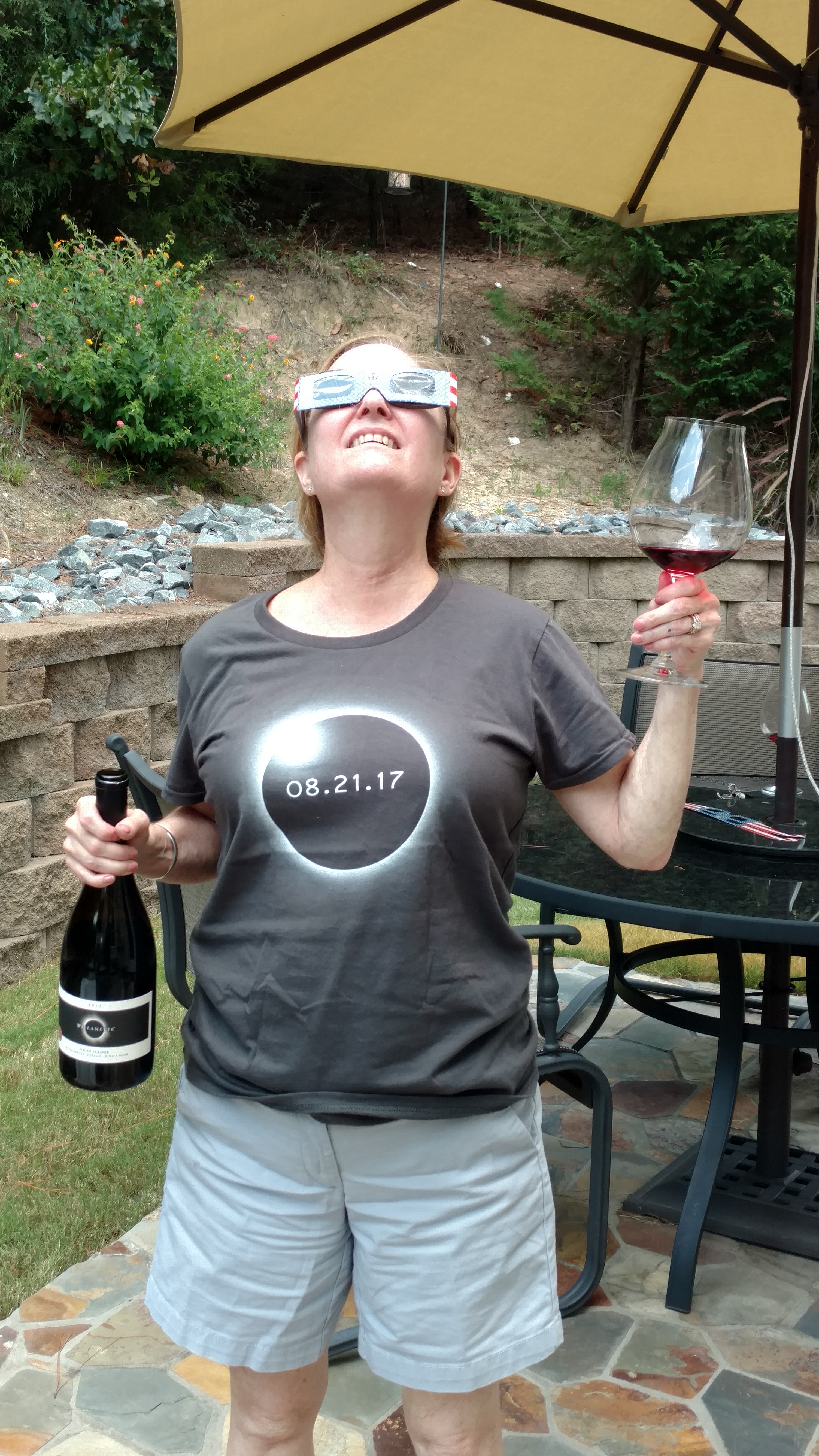
Customers viewing the Solar Eclipse in North Carolina with 2015 Solar Eclipse Pinot Noir.
On Monday August 21st, 2017 over 1,200 guests gathered in the newly constructed Hillyer Amphitheater at the winery, south of Salem to witness the Great American Solar Eclipse as it crossed, in totality over the Willamette Valley.
This was the first coast-to-coast solar eclipse to occur in nearly a century with our vineyard in the direct path, creating an ideal viewing location.
Eclipse viewers filled the amphitheater, toasts of Frizzanté in hand to witness the solar eclipse. As the partial eclipse began at approximately, 9:06 am guests all united in amazement as we reached totality among the vines. Cheers erupted throughout the viewing and at 10:17 am, we all gazed up at the eclipse, which reminded us all at Willamette Valley Vineyards how important the sun is to the growing cycle of our vines.
As the eclipse concluded its path over the Willamette Valley guests celebrated with wine tasting, including sampling the 2015 Solar Eclipse Pinot Noir and Chardonnay, live music, educational seminars hosted by Dr. Mark Cheung, and food pairings.
Our Solar Eclipse Pinot Noir was sourced from the sub-AVAs in the Willamette Valley. Only 615 cases were produced of this bottle-numbered wine. Our Solar Eclipse Chardonnay was sourced from our three estate vineyards in the Willamette Valley. Only 315 cases were produced of this bottle-numbered wine meant to commemorate this once-in-a-lifetime experience.
Thank you for making this truly a once-in-a-lifetime experience!
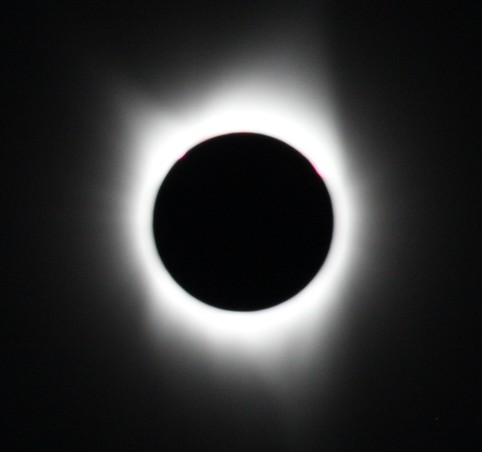
Total Solar Eclipse over the East Block at Willamette Valley Vineyards. Photo credit: Scott Cassidy
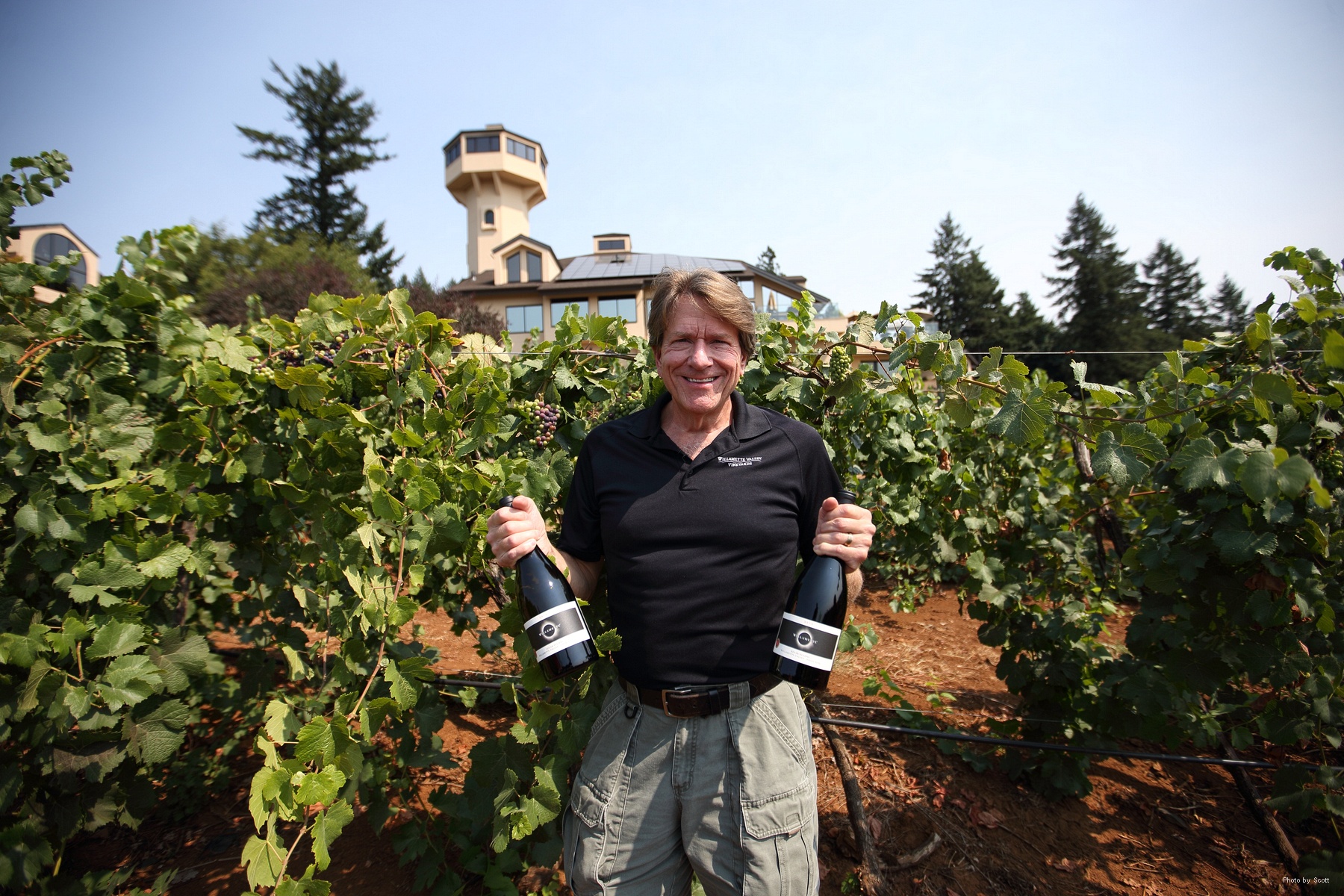
Founder, Jim Bernau with the commemorative bottles of the 2015 Solar Eclipse Pinot Noir and Chardonnay. Photo credit: Scott Cassidy
Summer Daily Pairings Menu
We are excited to present our new Daily Pairings Menu filled with fresh, local summer ingredients that pair perfectly with our latest wine releases. Our Estate Tasting Room is now open daily, 11 am - 6 pm and Thursday - Friday, 11 am - 8 pm until September 8th Please join us soon!
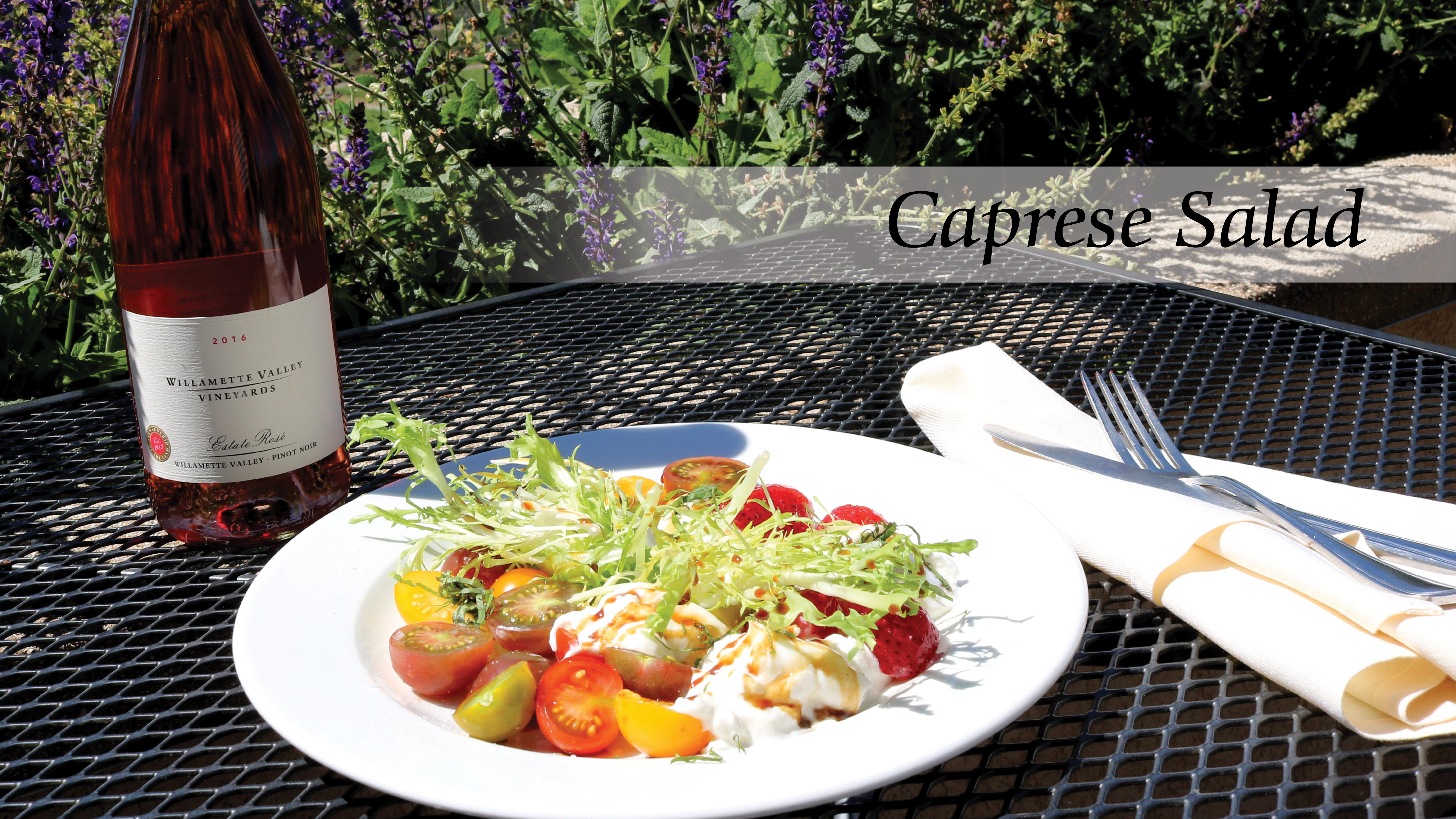 Caprese Salad
Caprese Salad
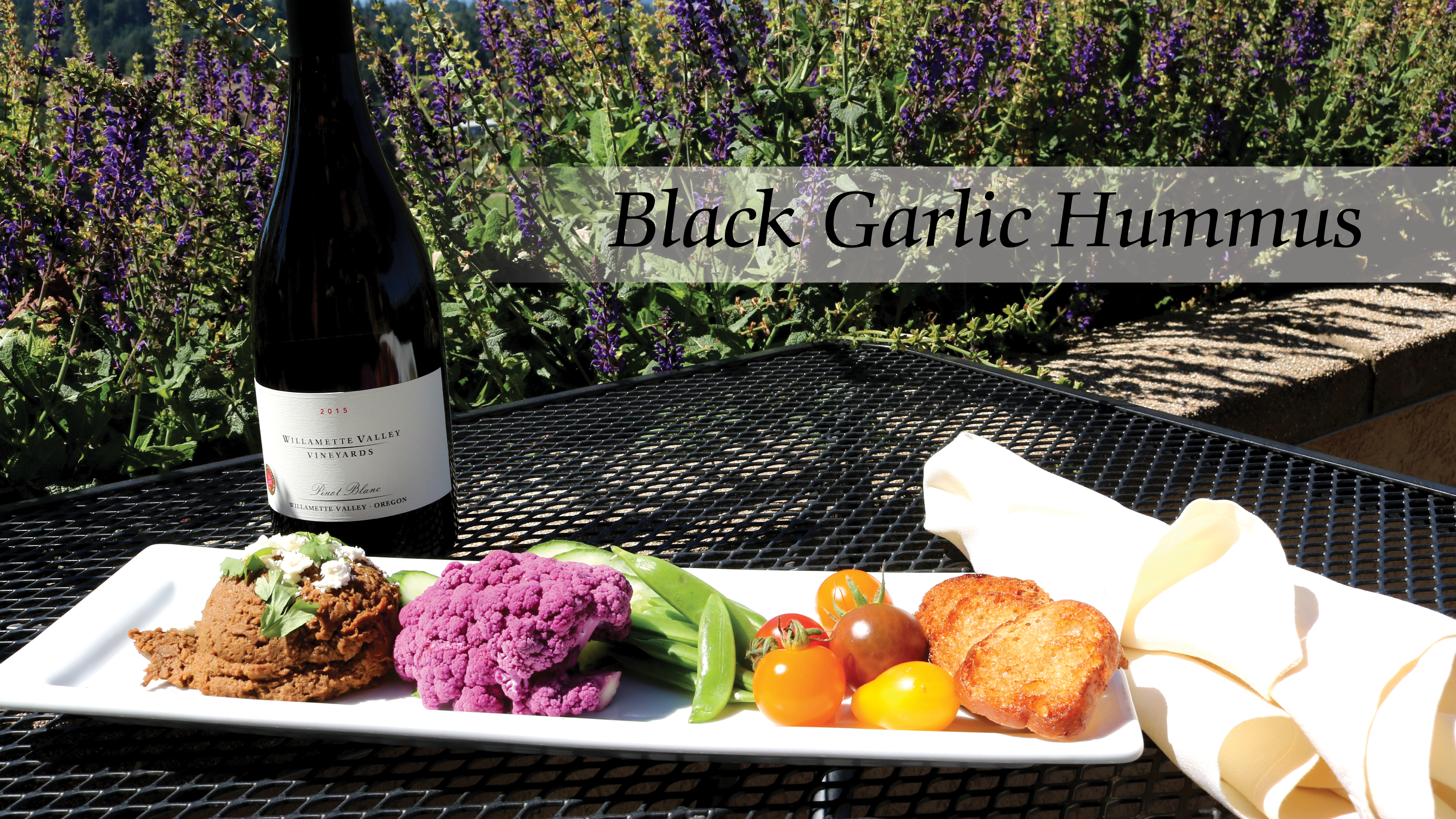 Black Garlic Hummus
Black Garlic Hummus
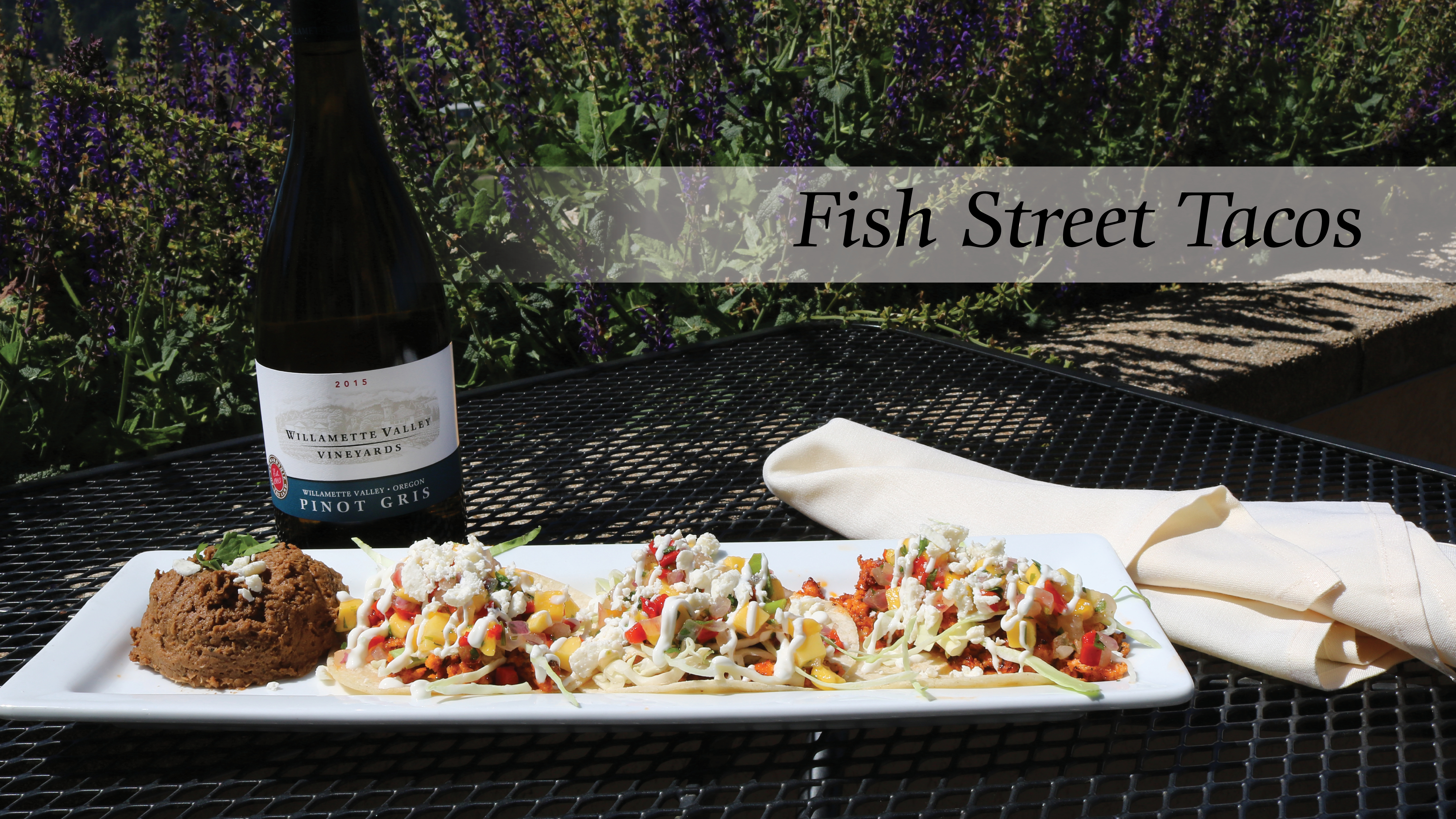 Fish Street Tacos
Fish Street Tacos
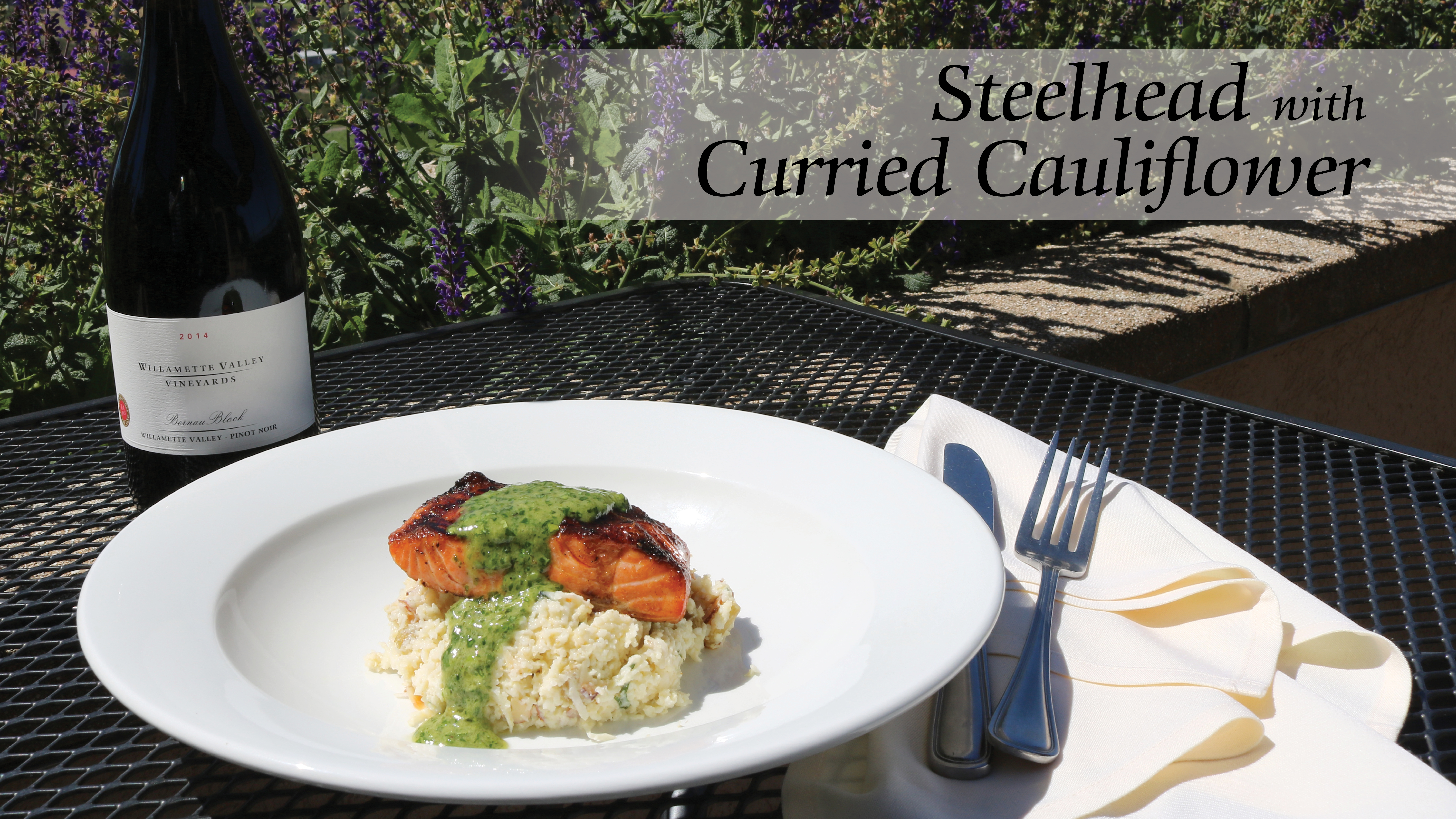 Steelhead with Curried Cauliflower
Steelhead with Curried Cauliflower
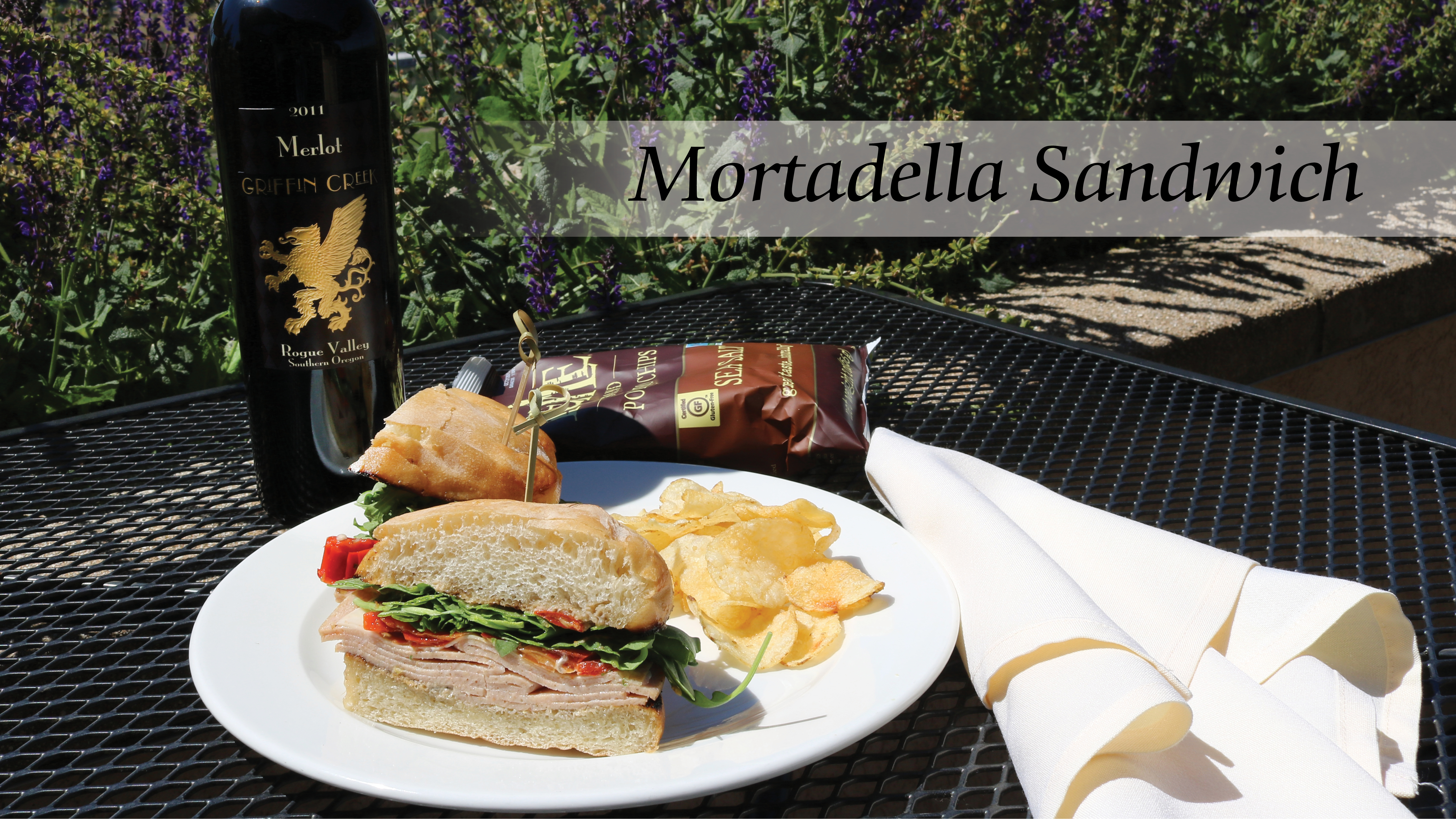 Mortadella Sandwich
Mortadella Sandwich
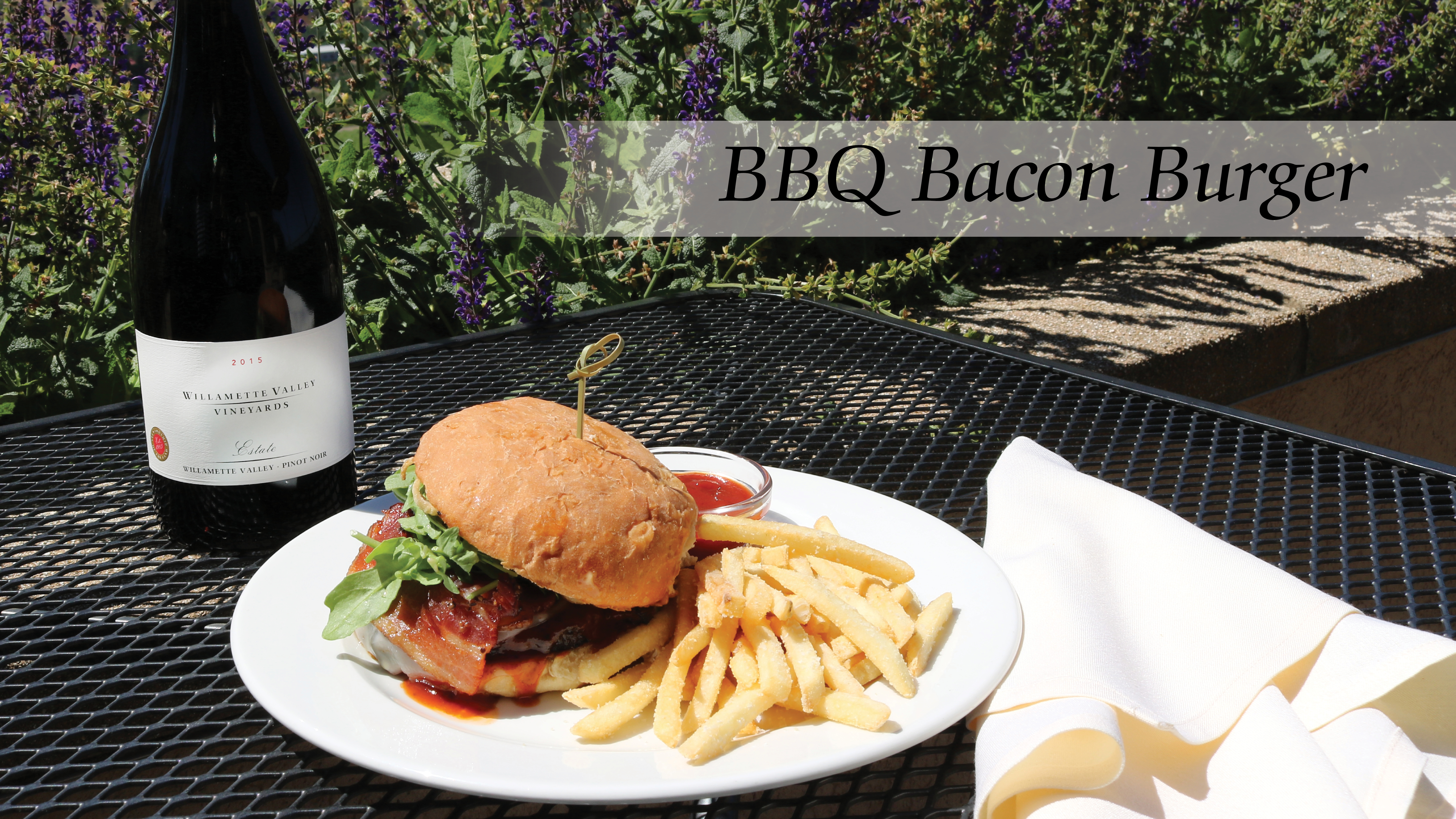 BBQ Bacon Burger
BBQ Bacon Burger
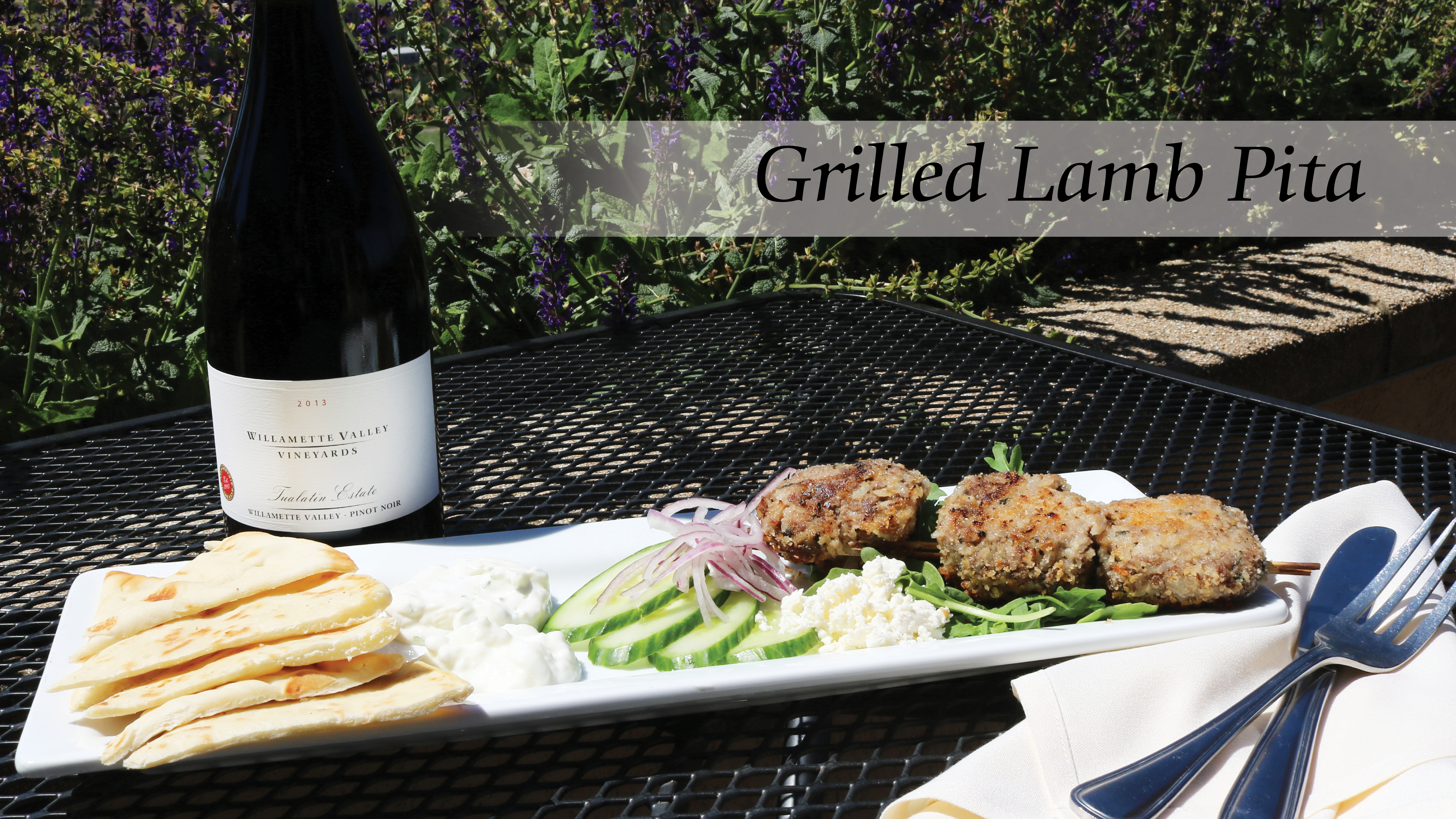 Grilled Lamb Pita
Grilled Lamb Pita
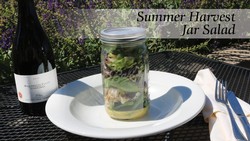 Summer Harvest
Summer Harvest
Jar Salad
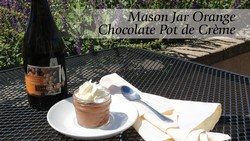
Mason Jar Orange
Pot de Créme

Birds in the Vineyard
Species of Birds Sighted:
26
White-crowned Sparrow: 13
American Goldfinch: 6
House Finch: 5
Song Sparrow: 5
Wilson's Warbler: 4
Chipping Sparrow: 4
Dark-eyed Junco (Oregon): 4
European Starling: 3
Spotted Towhee: 3
American Crow: 3
Tree Swallow: 3
Turkey Vulture: 2
Violet-green Swallow: 2
Brewer's Blackbird: 2
Bewick's Wren: 2
Anna's Hummingbird: 1
Northern Flicker: 1
American Kestrel: 1
Pacific-slope Flycatcher: 1
Black-capped Chickadee: 1
Chestnut-backed Chickadee: 1
Red-breasted Nuthatch: 1
House Wren: 1
American Robin: 1
Black-throated Gray Warbler: 1
Western Tanager: 1
As the spring sun rises over our Estate vineyard in the Salem Hills, so do 26 different species of wildlife birds! On Sunday, May 7th, the Salem Audubon Society joined us to learn about our sustainability efforts during a Birds & Wine event. Members hiked two miles through the vineyard with Viticulturist, Ashley Lindsay, to identify native species inhabiting our vineyard and our Kestrel nesting boxes. These birds help create a balanced eco-system in our vineyard by controlling pest populations. Each year we introduce new birds from Cascade Raptor Center, which is a nature center and wildlife hospital focused on raptor rehabilitation.
More information regarding our stewardship efforts can be found here.
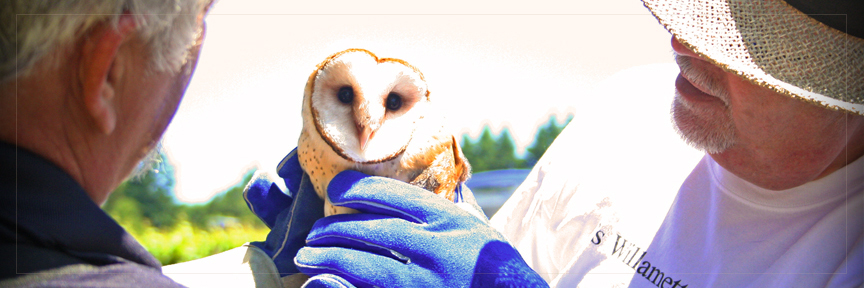
Spring Daily Pairings Menu
We are excited to present our new Daily Pairings menu filled with fresh, local ingredients that pair perfectly with our latest wine releases. Our Estate Tasting Room is open daily from 11 am - 6 pm, serving up delicious food and classic Oregon wines. Our full menu is listed here. We hope to see you soon.
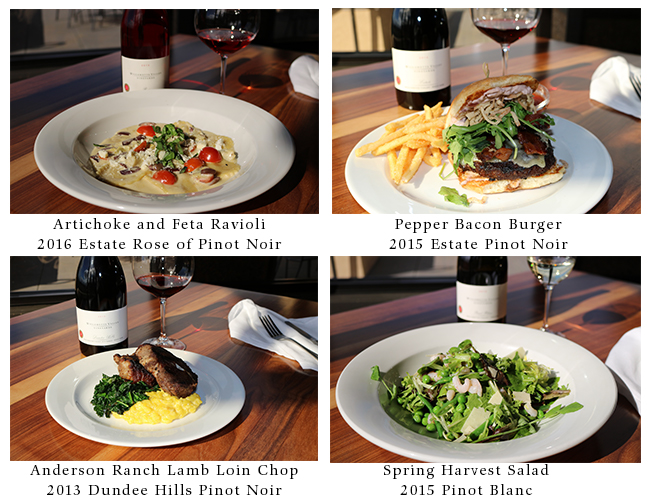
New Pairings Wine Dinner Menu for Winter
Please join us for a Pairings Wine Dinner, hosted at the Estate every Friday and Saturday evening at 7 pm. Our Winery Chef, DJ MacIntyre, is proud to present local, seasonal dishes that pair perfectly with our classic Oregon wines.
This four course dinner is designed to provide a unique and educational food and wine experience. It's also a great way to celebrate an upcoming birthday or anniversary with someone special.
Menu
2013 Chehalem Mountains Pinot Noir, AVA Series
Smoked Steelhead Mousse
with garlic-herb crostini and pickled cucumbers
2011 Griffin Creek Merlot
Roast Quail
with potato pavé, smoked tomato coulis, microgreens and 60 degree quail egg
2013 Elton Pinot Noir
Moroccan Lamb Loin
with saffron créme quinoa and pomegranate molasses
2015 Estate Chardonnay
NW Apple Tart
with local apples, crisp pie crust and vanille créme
Brought to you by:
Winery Chef DJ MacIntyre
Sous Chef Brandon Wall
Portland Becomes First 'Salmon-Safe' City
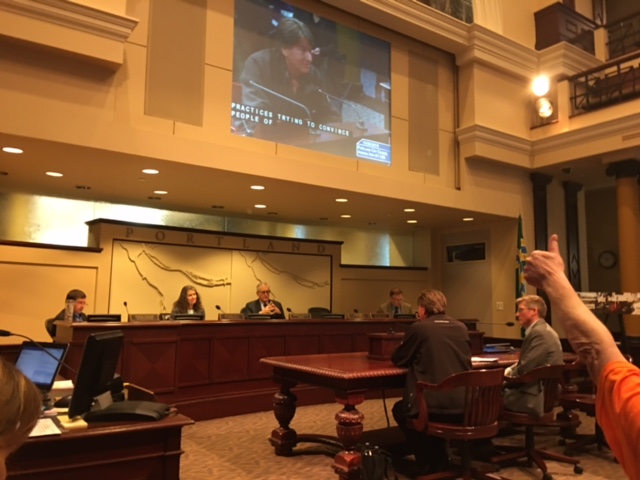
Dan Kent of Salmon Safe, one of the Northwest's leading advocacy and certification groups for environmental sustainable practices, and our Founder Jim Bernau testified before the Portland City Council yesterday. Their testimony encouraged Portland to become the first city to earn Salmon-Safe certification.
Portland Major Charlie Hales wrote in a release, "Portland is a city of rivers, and our economic well-being and quality of life is interwoven with the health of the Willamette, Columbia, and connecting watersheds that are home to native-endangered salmon."
Twenty years ago, several winemakers, including Bernau began working with Kent of Salmon Safe to implement sustainable practices in their vineyards to improve soil health and prevent harmful water run-off damaging to wildlife. This organization has now grown to approx. 350 vineyards from British Columbia to the southern Oregon border committed to protecting our environment through their farming practices. Salmon-Safe also helped inform the development of the Oregon wine industry's LIVE certification program and the two continue to work together to this day.
Founder Jim Bernau Nominated for
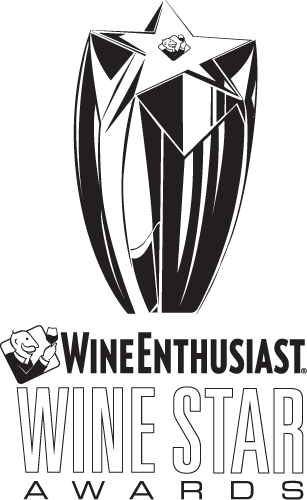
We are proud to announce that Willamette Valley Vineyards Founder Jim Bernau is a finalist for "Person of the Year" in the prestigious Wine Star Awards from Wine Enthusiast. In addition, the Willamette Valley has also been nominated as "Wine Region of the Year".
Wine Enthusiast Magazine was founded in 1988 and with 800,000 readers is regarded as the world’s largest periodical devoted exclusively to wine and spirits. They created the Wine Star Awards to honor individuals and companies that have made outstanding achievements in the wine and beverage world.
We are honored to have our Founder and our region recognized for excellence and be included among our industry's leaders and innovators.
Winners will be announced in the December "Best of the Year" issue of Wine Enthusiast Magazine.
Watch Jim's 30-year quest video which highlights the journey in creating estate-grown wines.
"Person of the Year" in the prestigious Wine Star Awards from Wine Enthusiast. In addition, the Willamette Valley has also been nominated as "Wine Region of the Year".
Jim Bernau Receives 2016 OSU College of Agricultural Sciences Hall of Fame Award
We are so proud to share the exciting news that our Founder Jim Bernau has been honored with the 2016 Oregon State University College of Agricultural Sciences Hall of Fame Award. Oregon Wine Research Institute (OWRI) details the recognition below:
Jim Bernau, founding owner of Willamette Valley Vineyards in Turner, OR, received the 2016 Oregon State University College of Agricultural Sciences Hall of Fame Award, which pays tribute to individuals who have made outstanding contributions in agriculture. He joins Dai Crisp (2015) and David Adelsheim (2013) as wine industry recipients of this honor.
Jim is an advocate of research and education efforts at OSU, supporting the Oregon Wine Research Institute and the OSU Fermentation Sciences program. Along with a team of industry representatives, his efforts to increase legislative funding enhanced OWRI research in four OSU departments, provided resources to hire an enology faculty research assistant and a research vineyard manager, and a new faculty position in OSU Applied Economics. These resources allow OWRI to better serve the wine industry.
Jim's lobbying efforts extend to the early 1980's with the start of the Oregon Wine Advisory Board (now the Oregon Wine Board) and the establishment of a grape tax to fund the organization. The OWB provides funding opportunities for viticulture and enology research though a granting process. He also supported legislative initiatives aimed at the building of wineries in farm zones, direct wine to consumer sales, and wine tasting in stores. OWB Executive Director Tom Danowski states, "Jim's generous spirit has lifted our industry through his gifts to iSalud! and Oregon State University. He has been an effective spokesperson for our industry in Salem and Washington, D.C."
Jim's contributions to OSU extend past his legislative efforts. When Jim was president of the Nor'Wester Brewing Company of Portland, he made a personal donation to OSU's food science department to establish the first professorship for fermentation science in the nation. Along with the donation, Bernau worked with OSU to establish a pilot brewery equipped with tanks and equipment, used to educate students on the mechanisms behind beer brewing and production.
Jim demonstrates his efforts in sustainability by his commitment to Oregon Low Input Viticulture and Enology. In the organization's beginning, Jim served on the LIVE board of directors, and he has dedicated a significant amount of time ensuring all vineyards under his control at Willamette Valley Vineyards are LIVE certified.
Mark Chien stated, "I met with Jim to interview him he had just returned from meeting with the governor, who wanted an update on the Oregon wine industry. The fact that she called Jim for the information speaks volumes of his role and importance to the state government and the Oregon wine community. The Oregon Wine Research Institute believes Jim deserves this honor."

